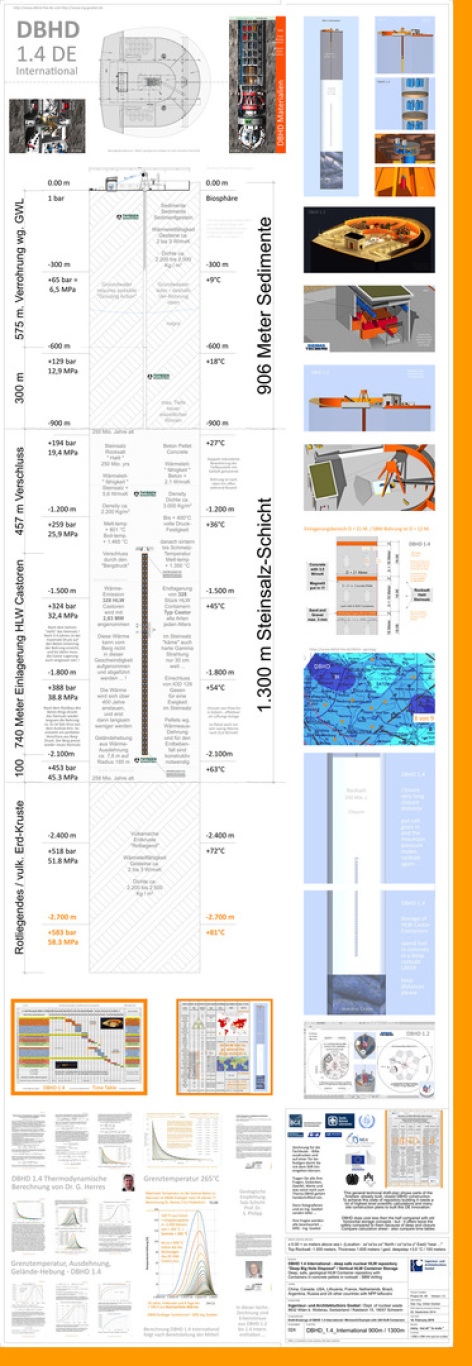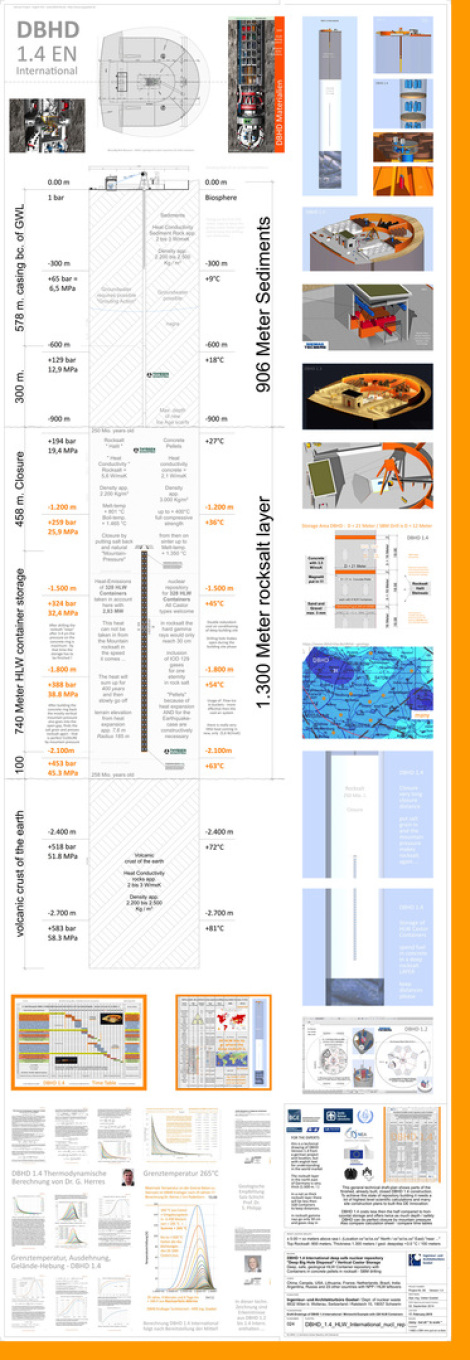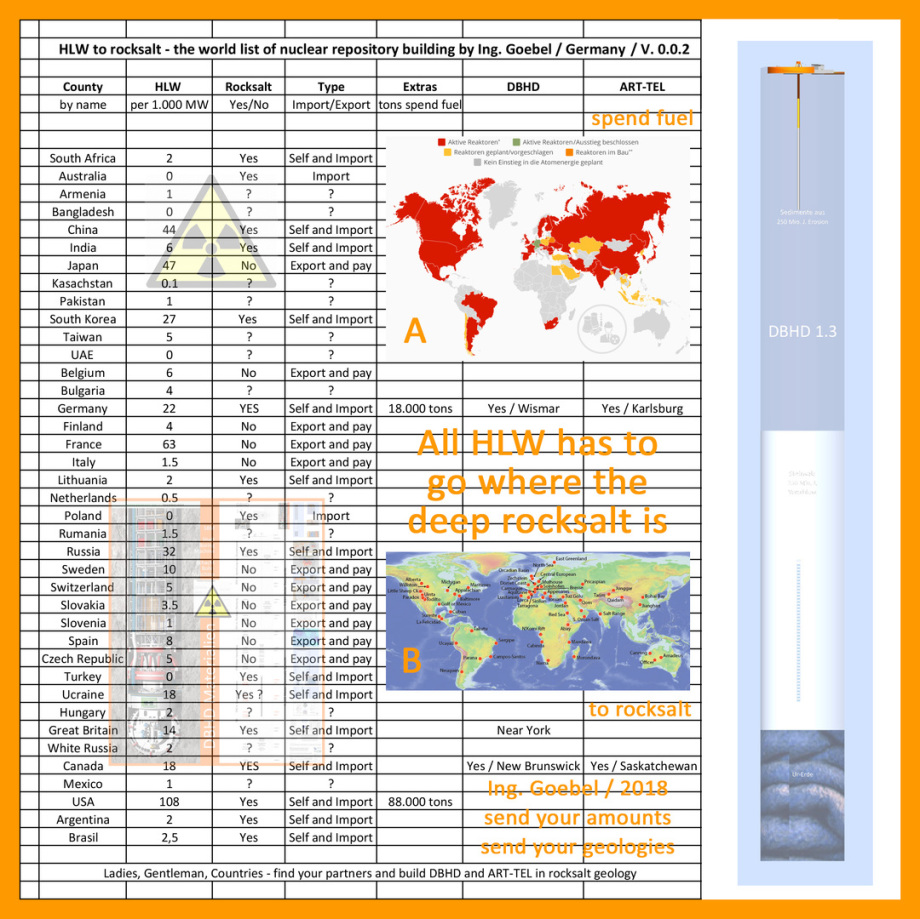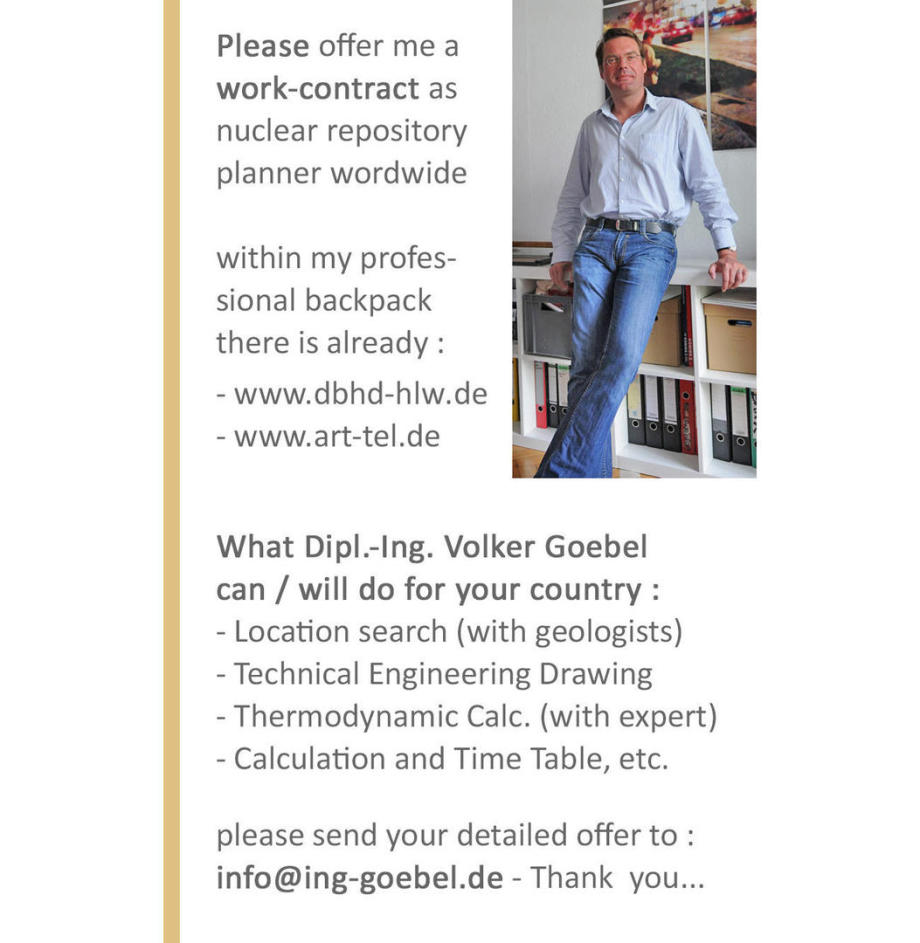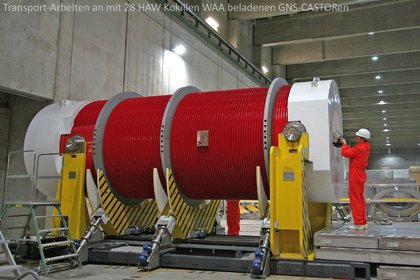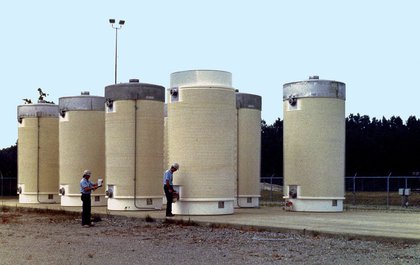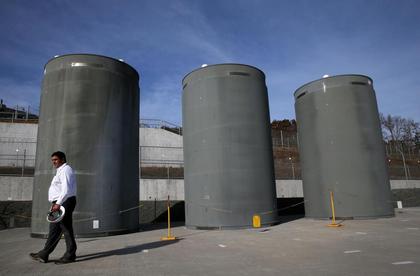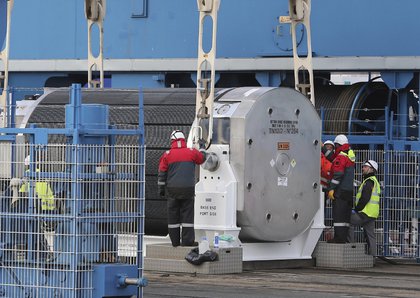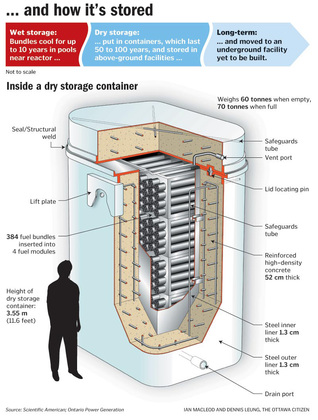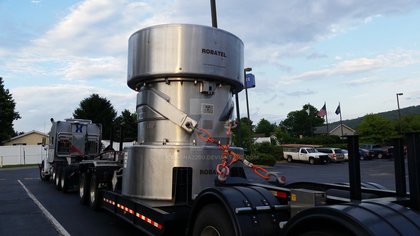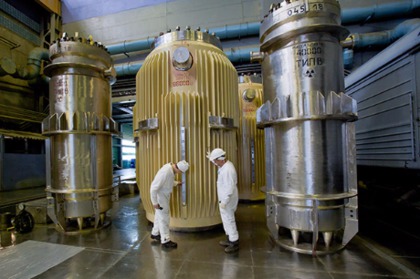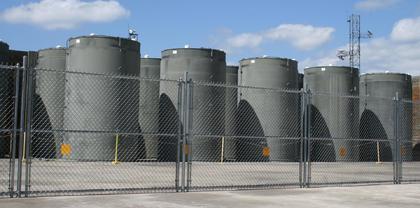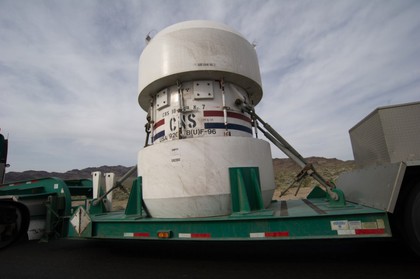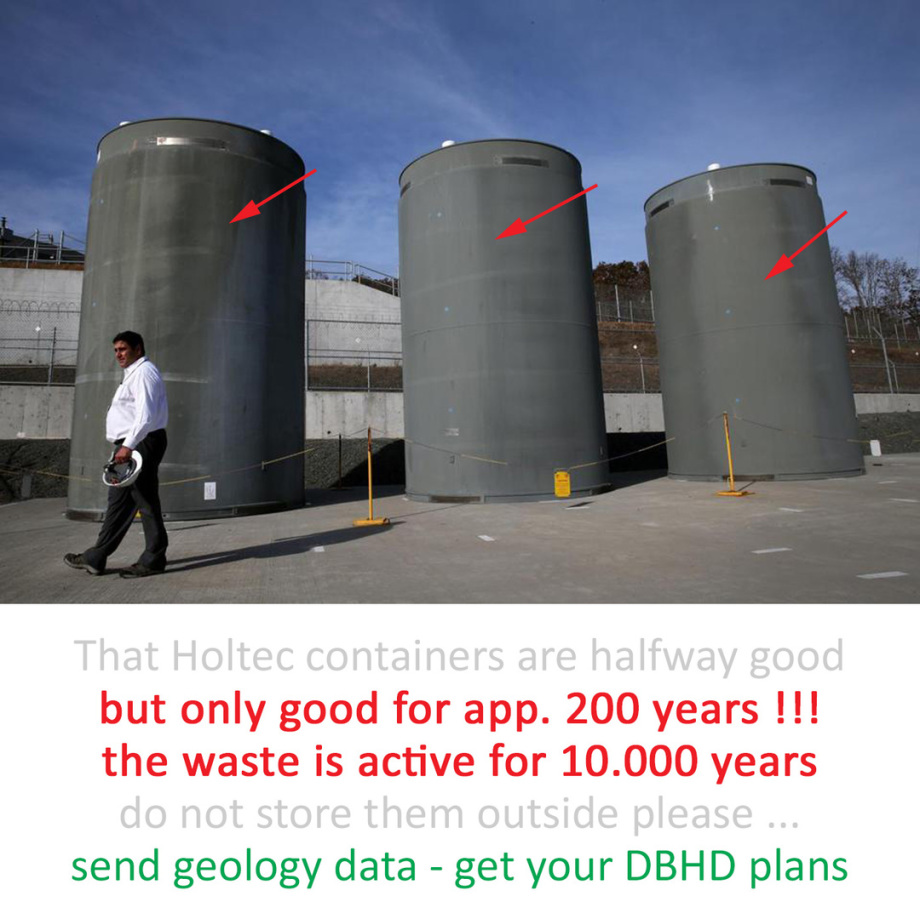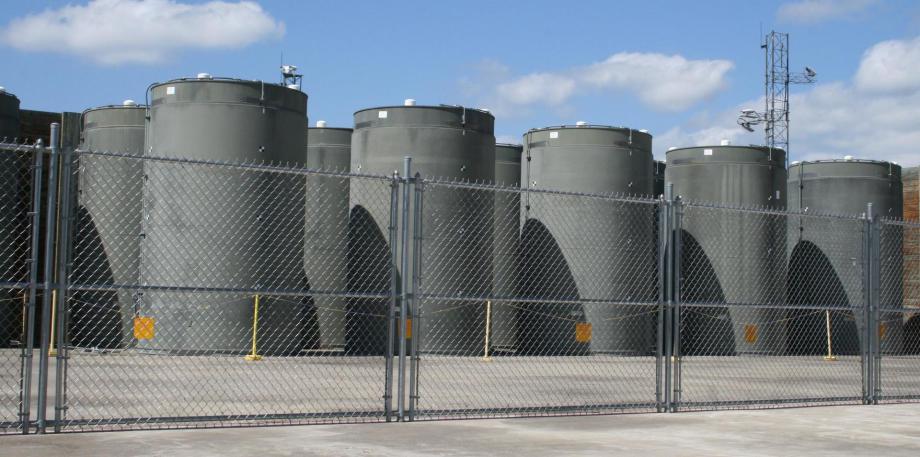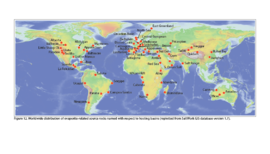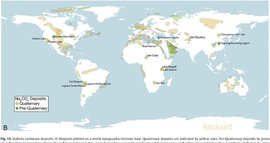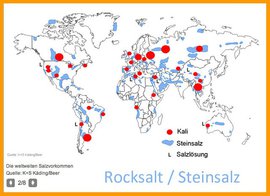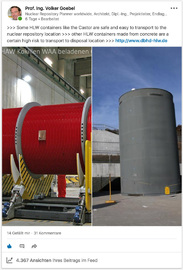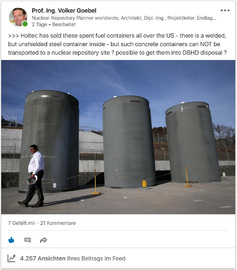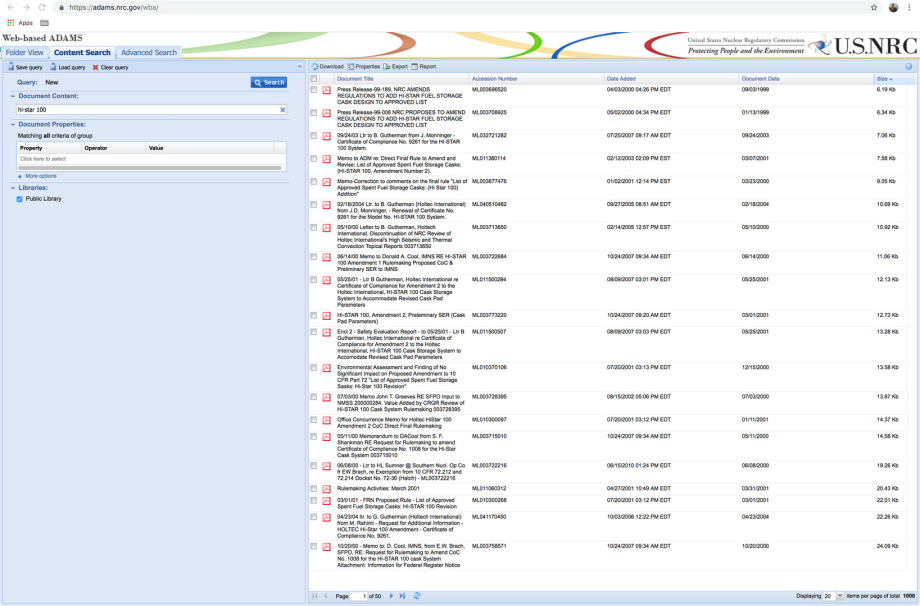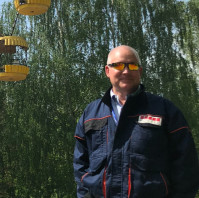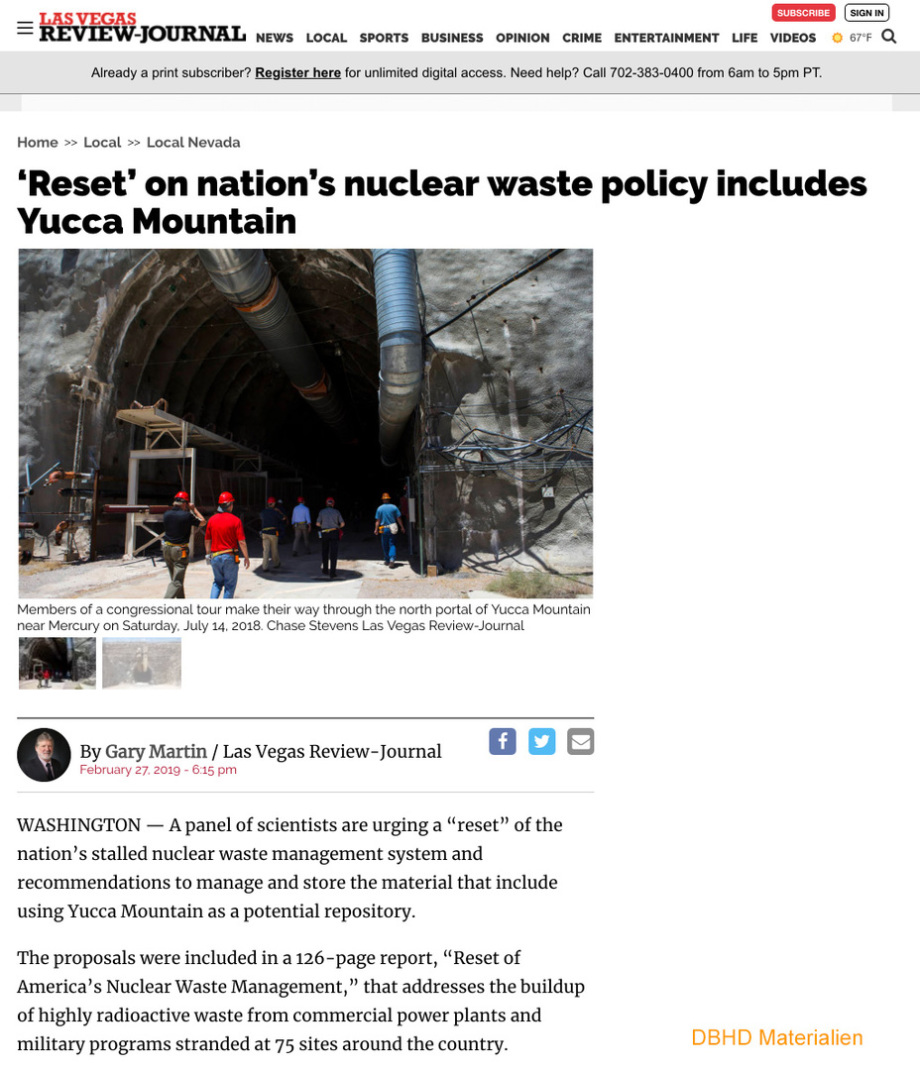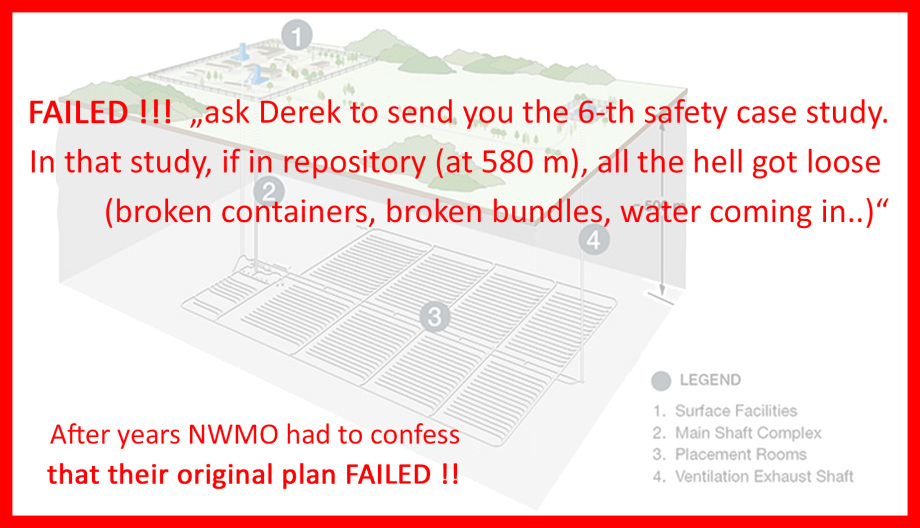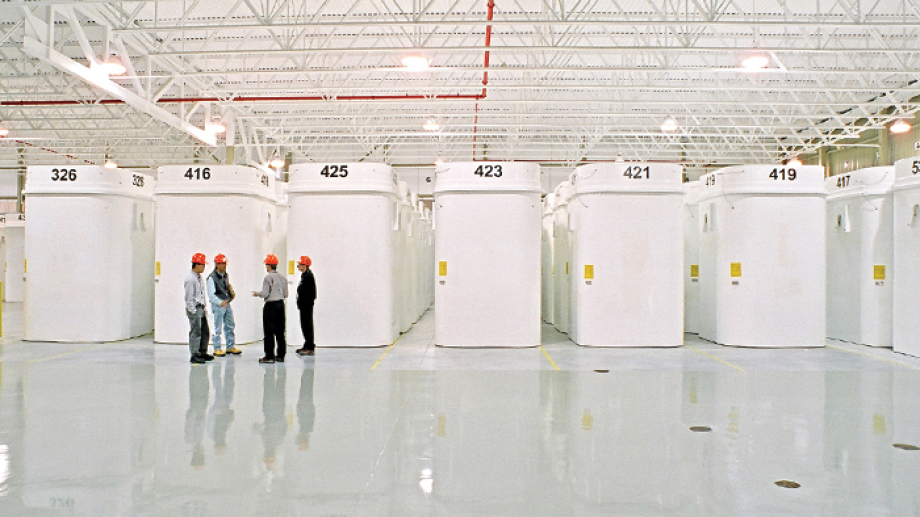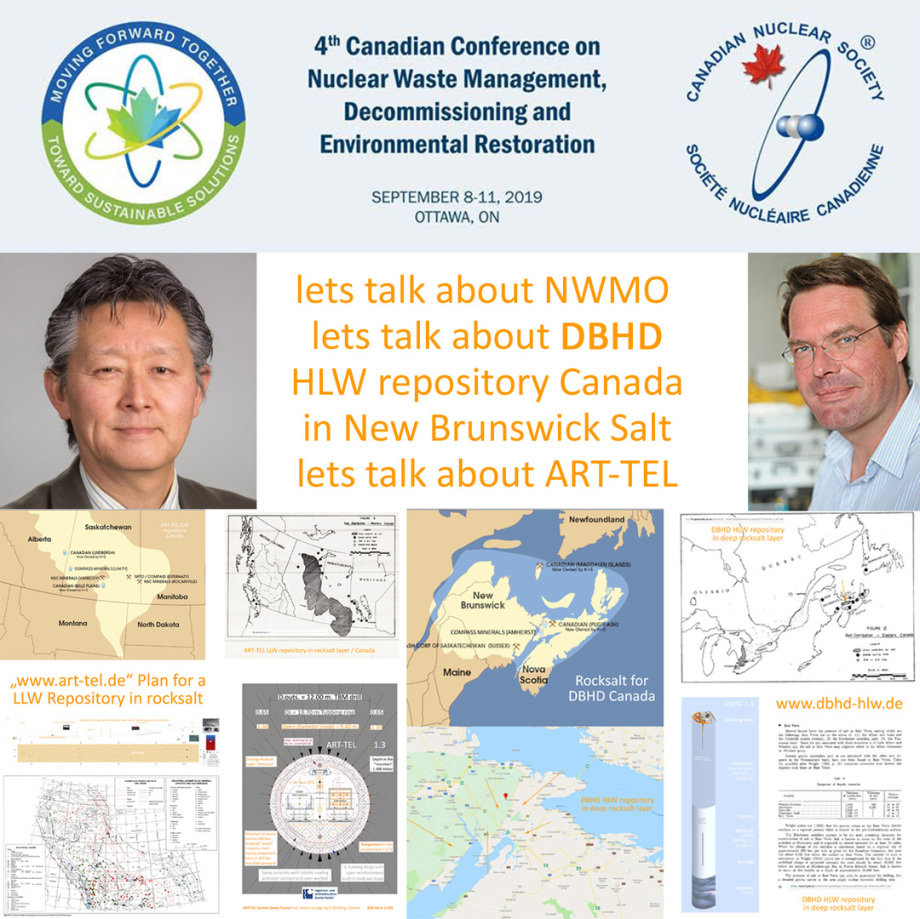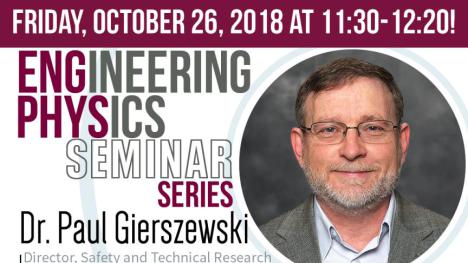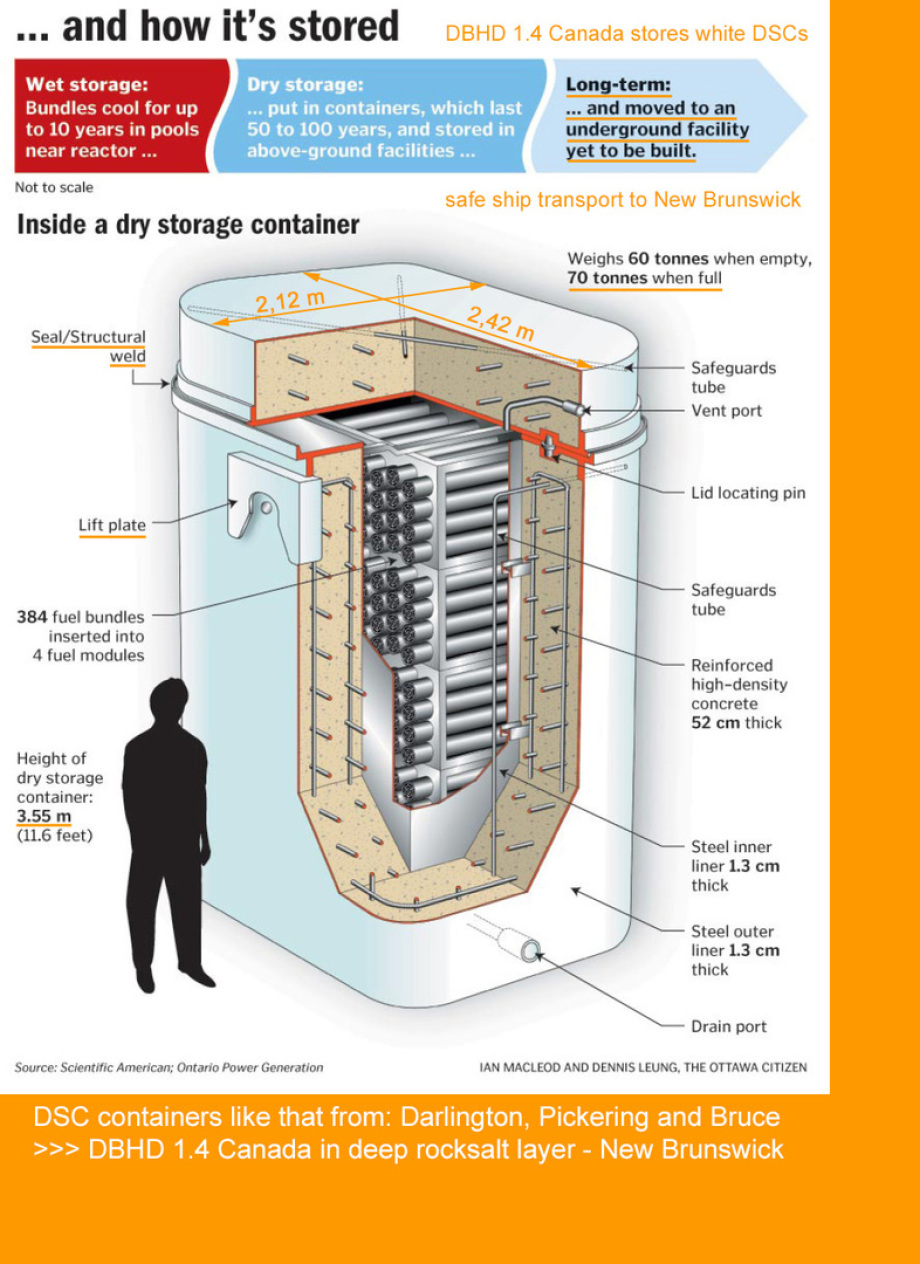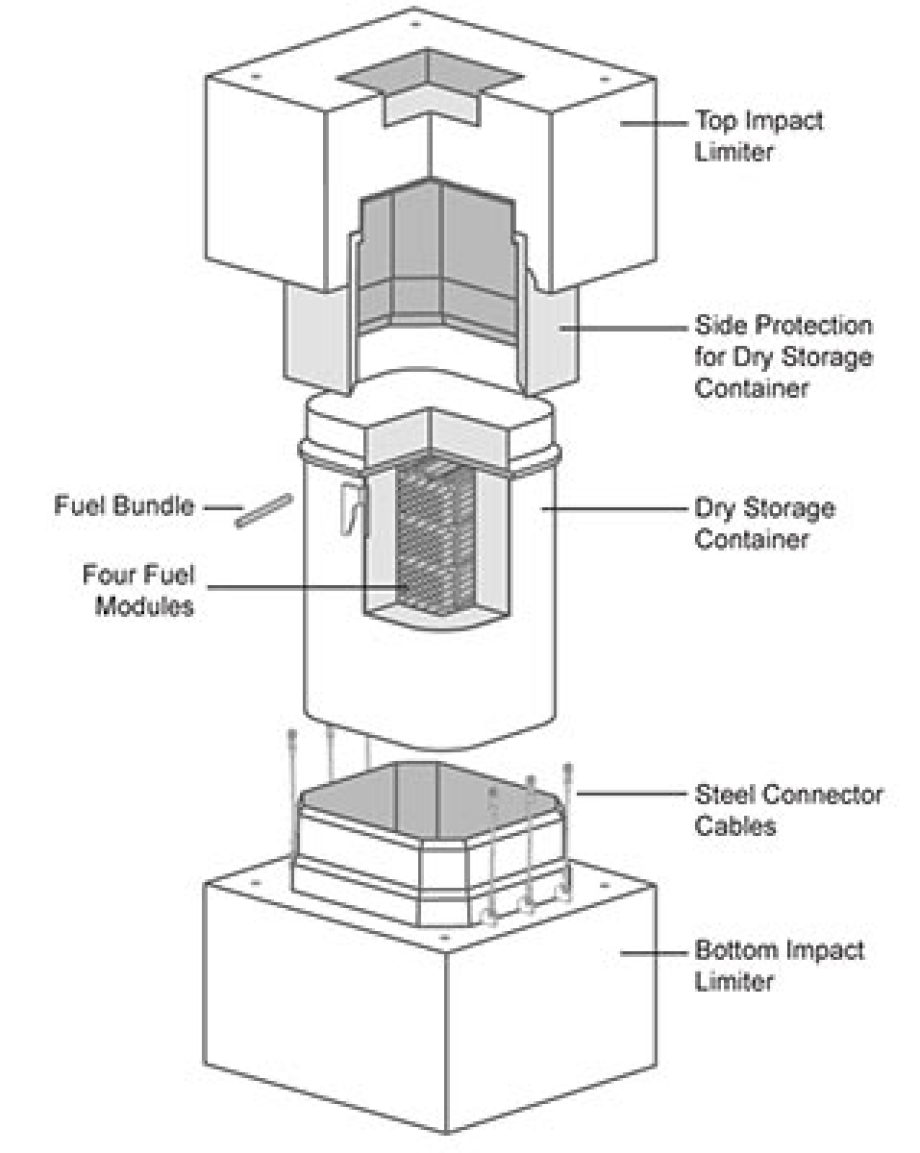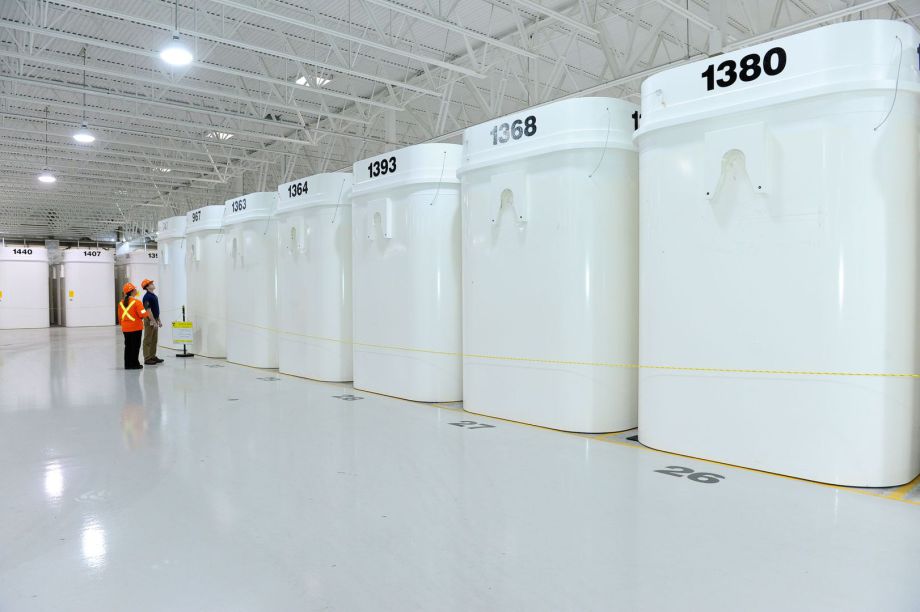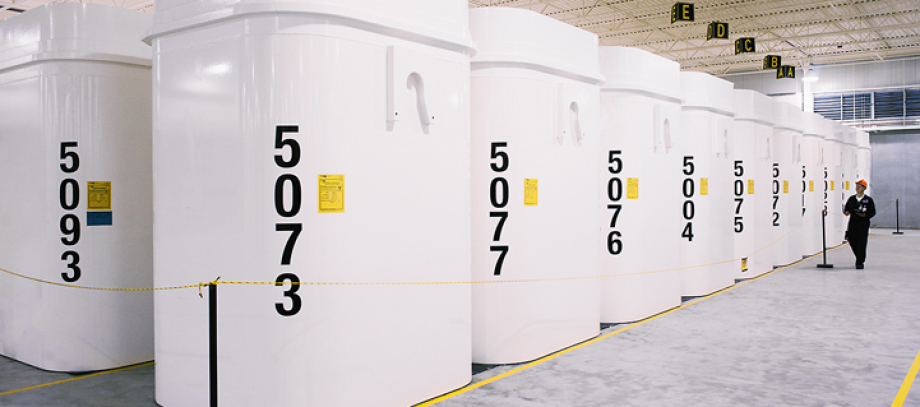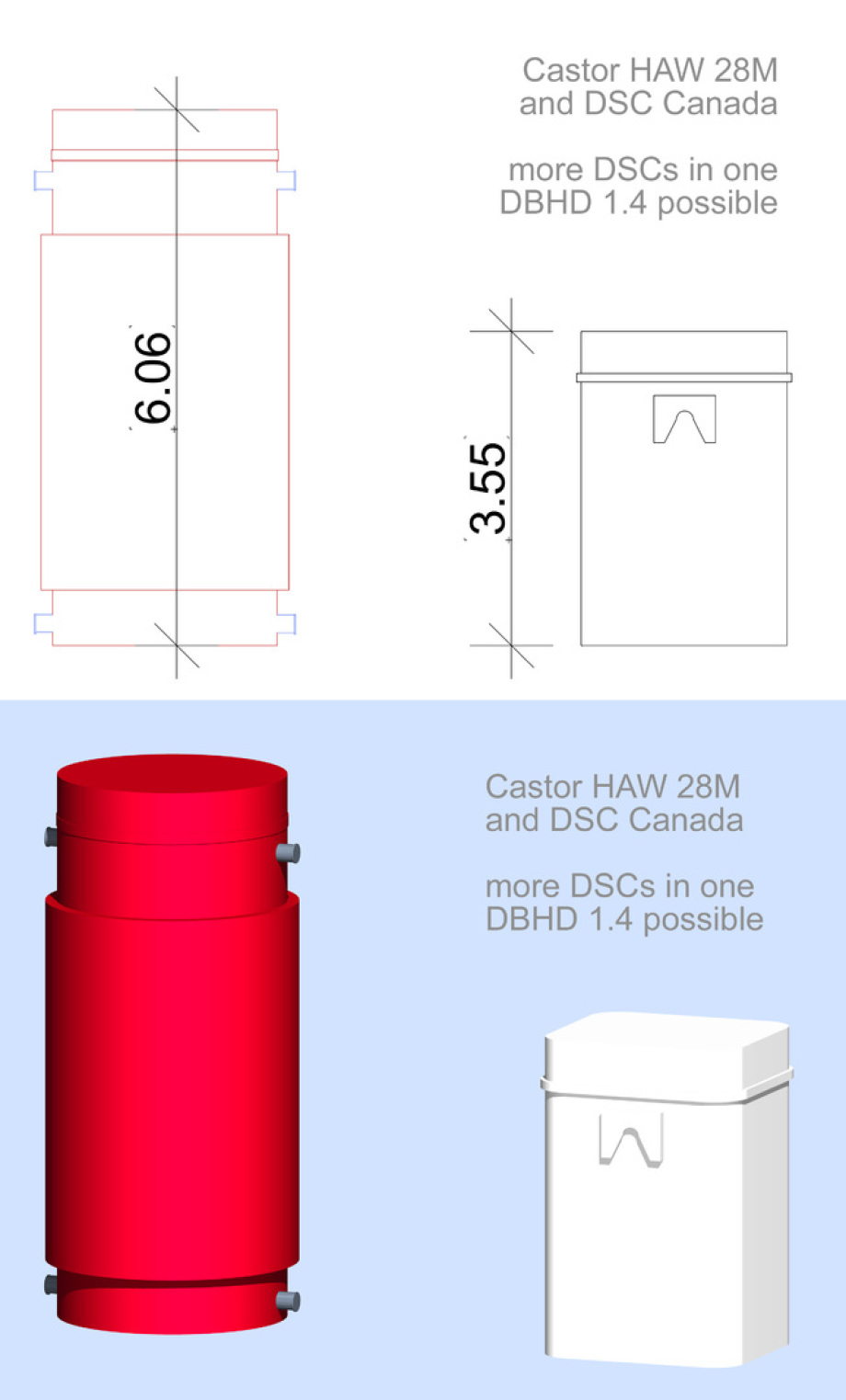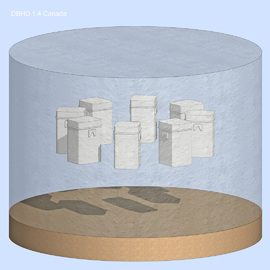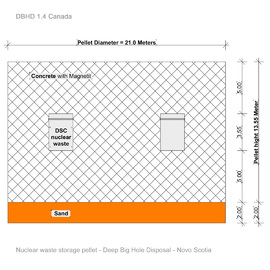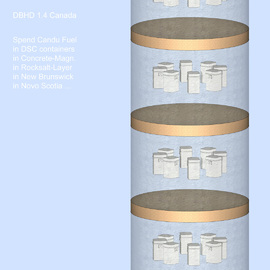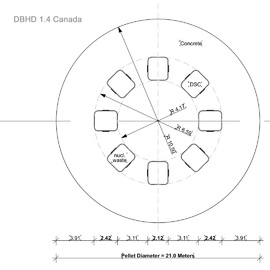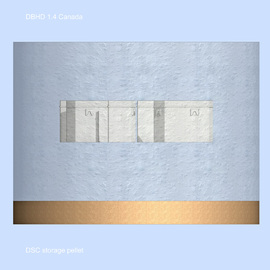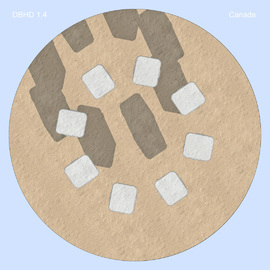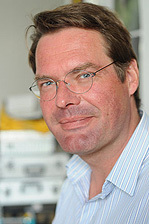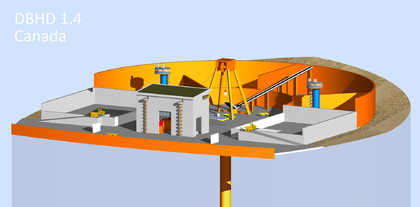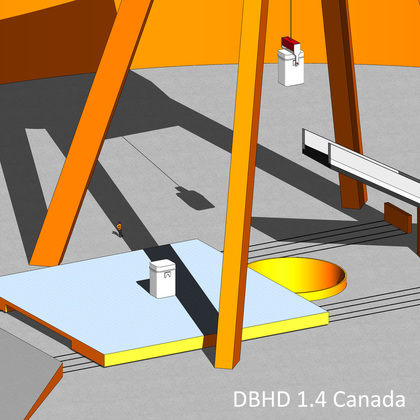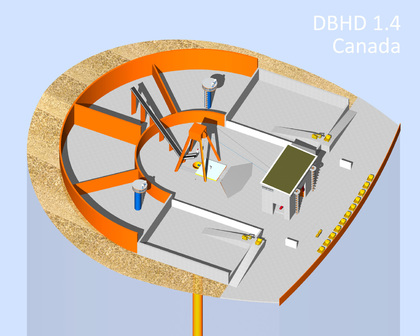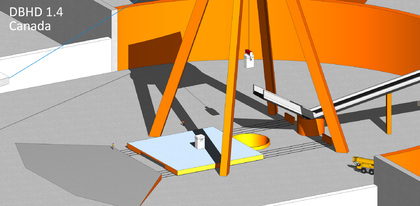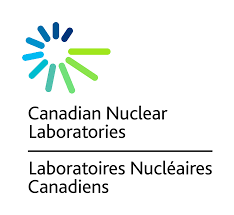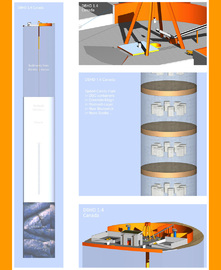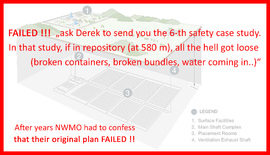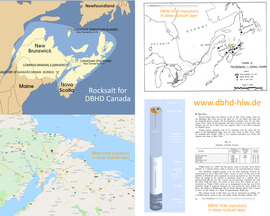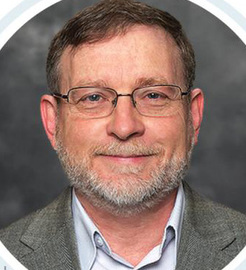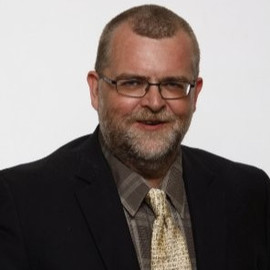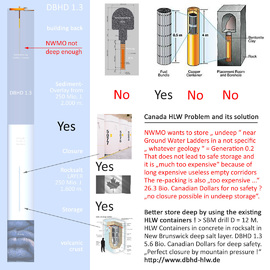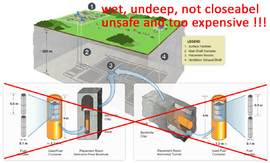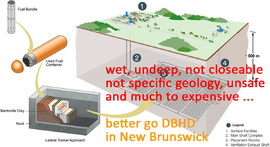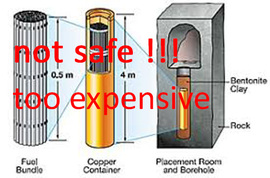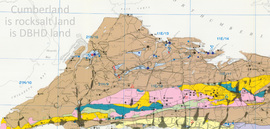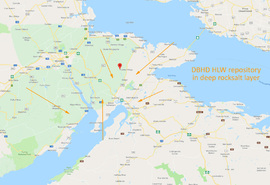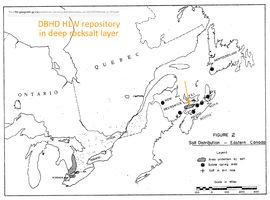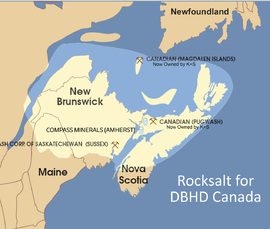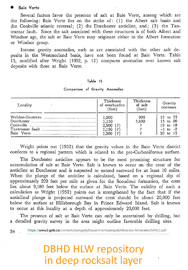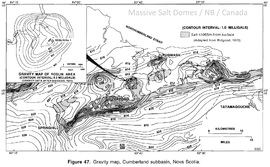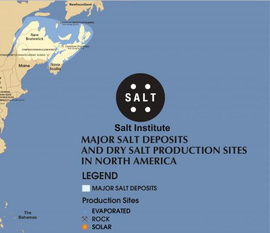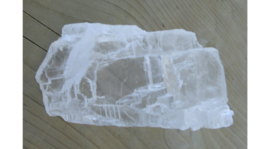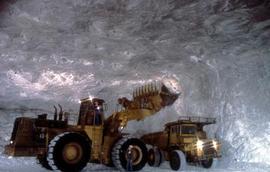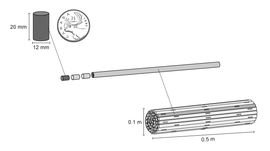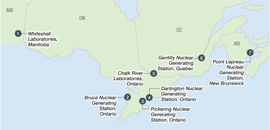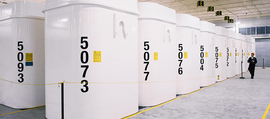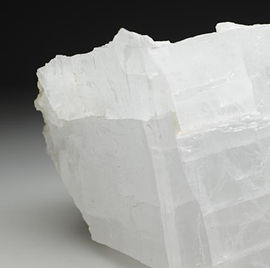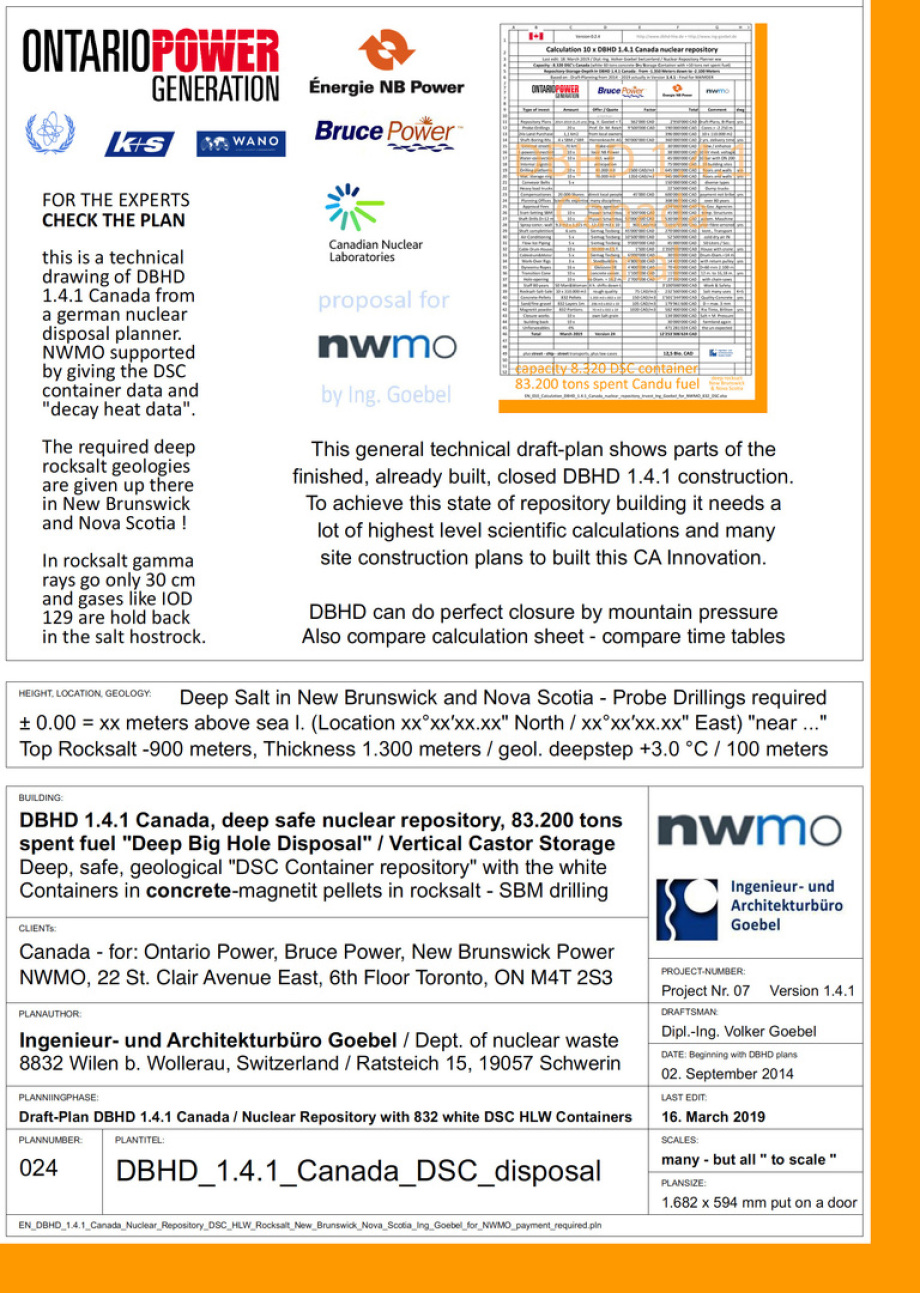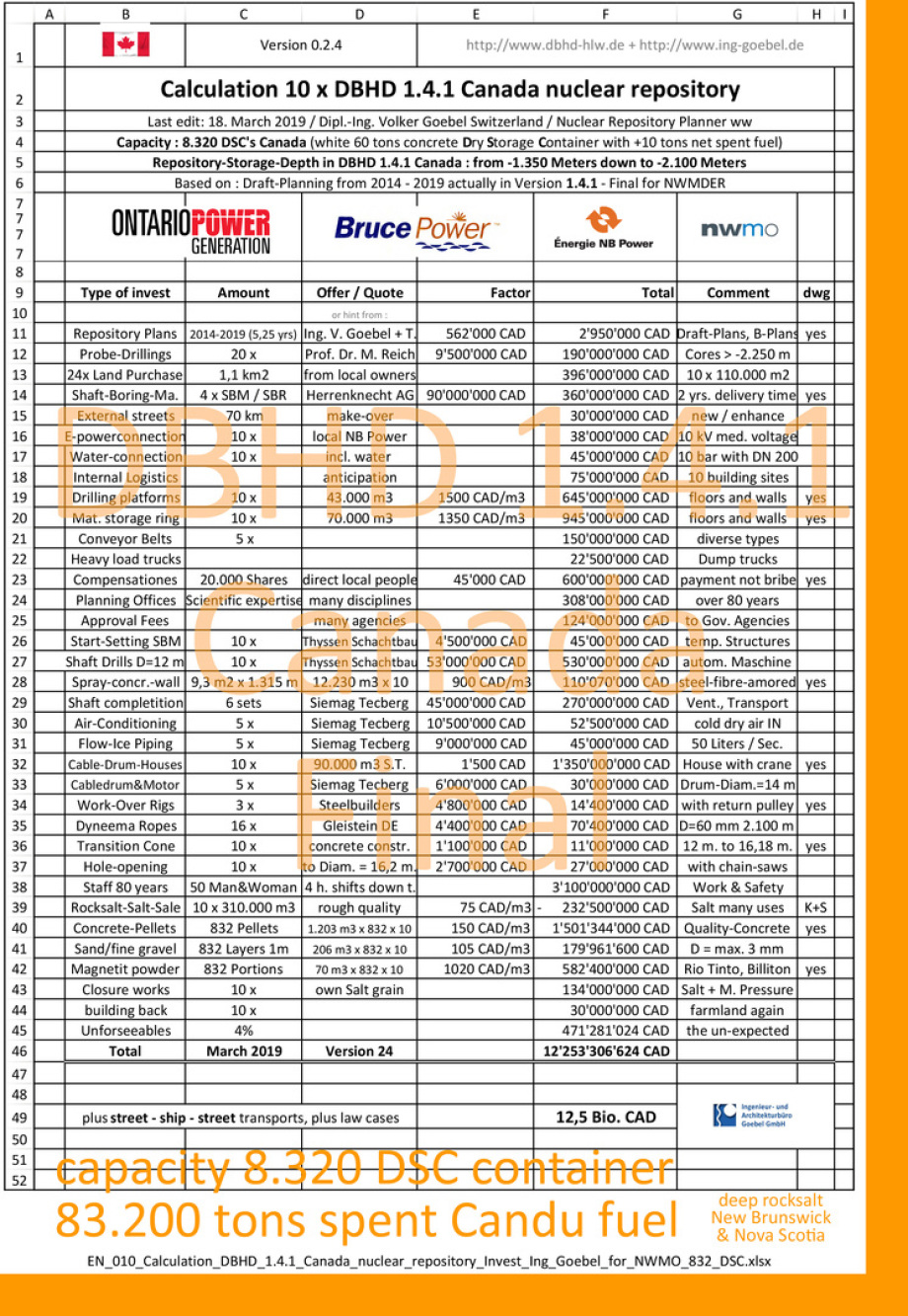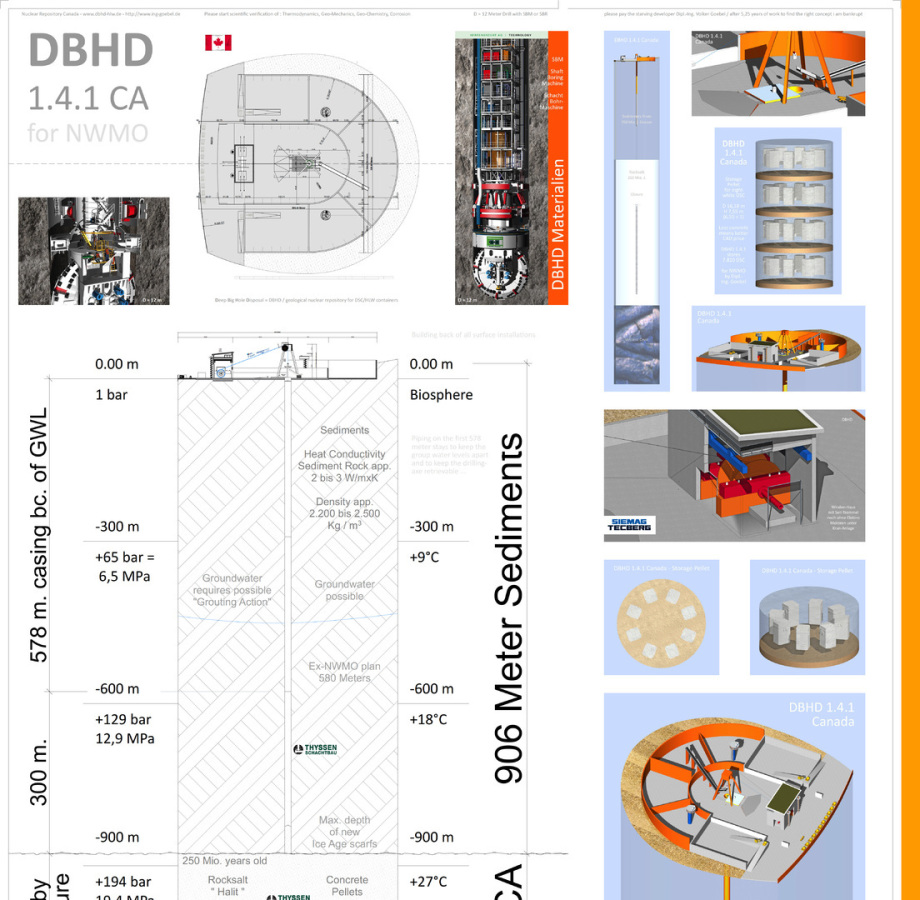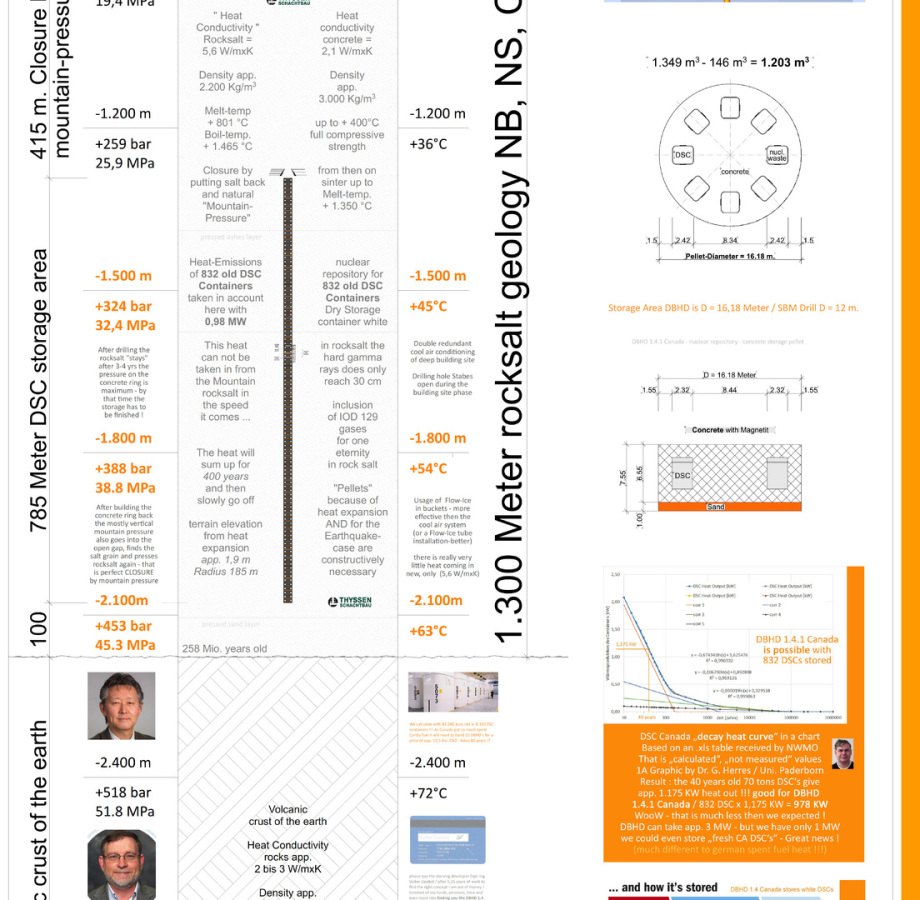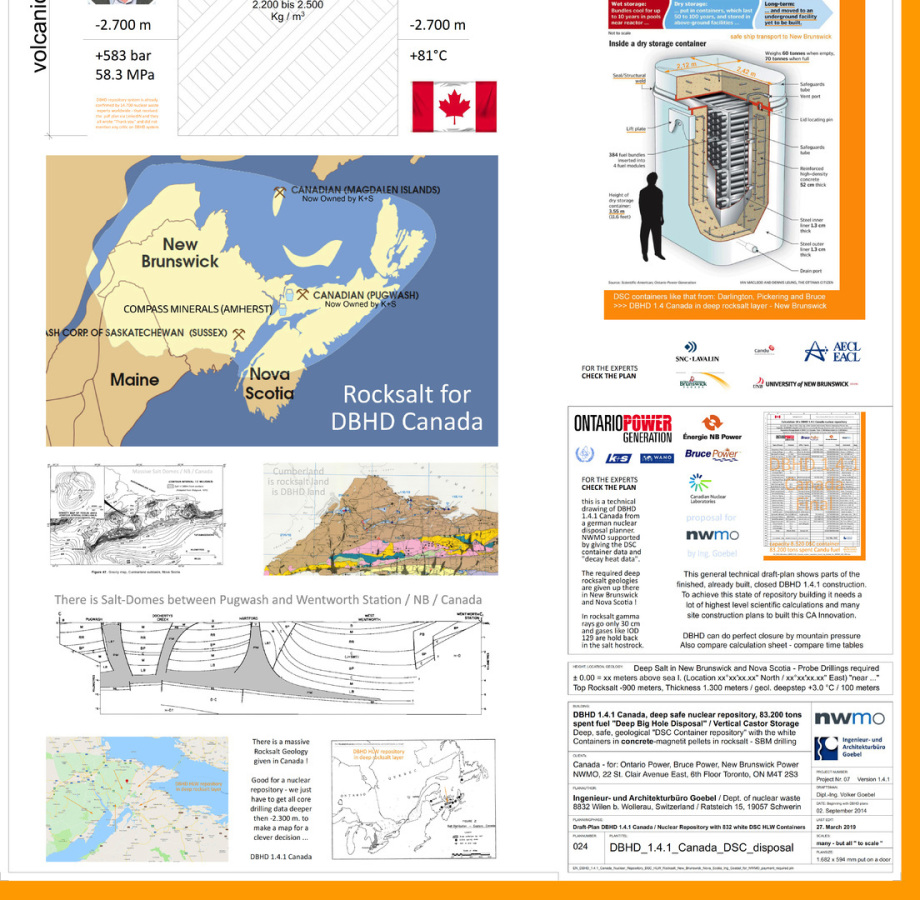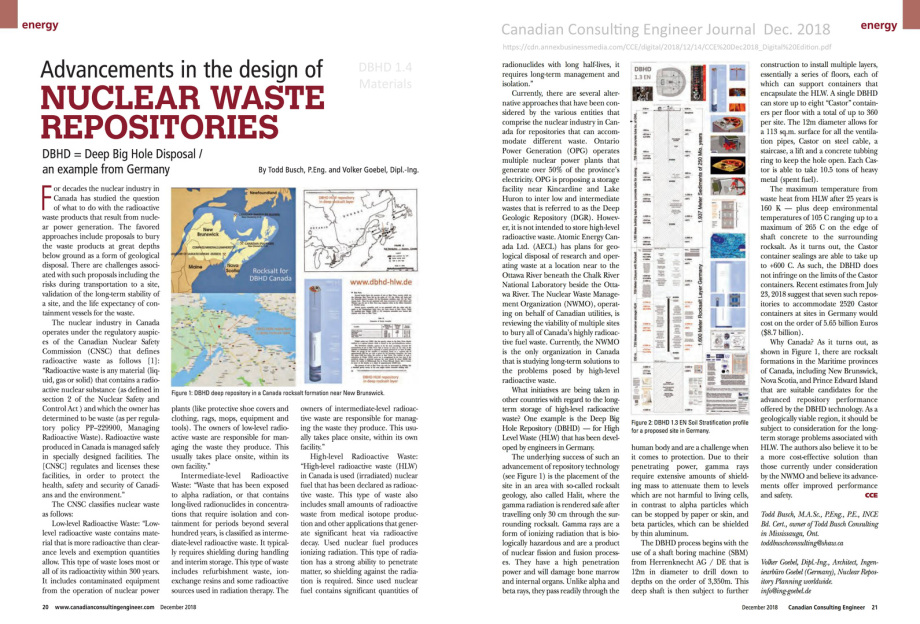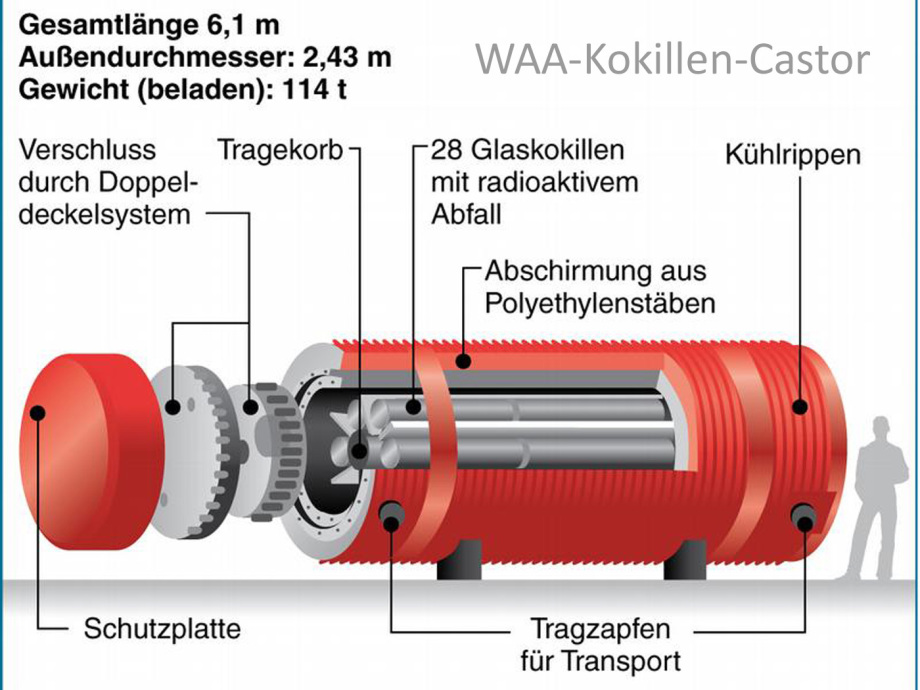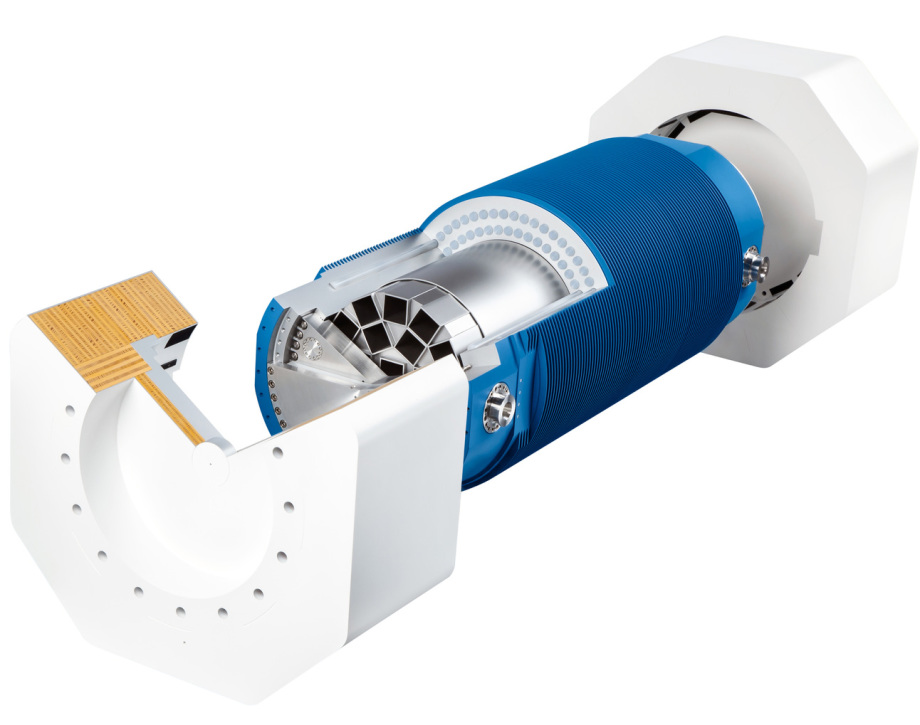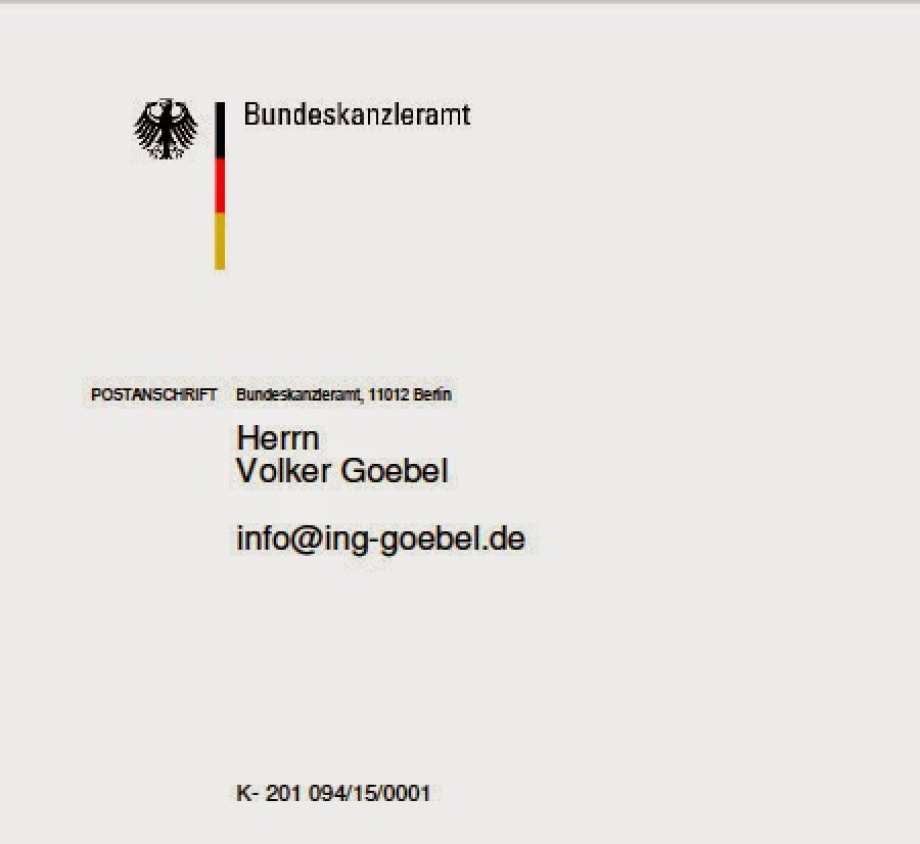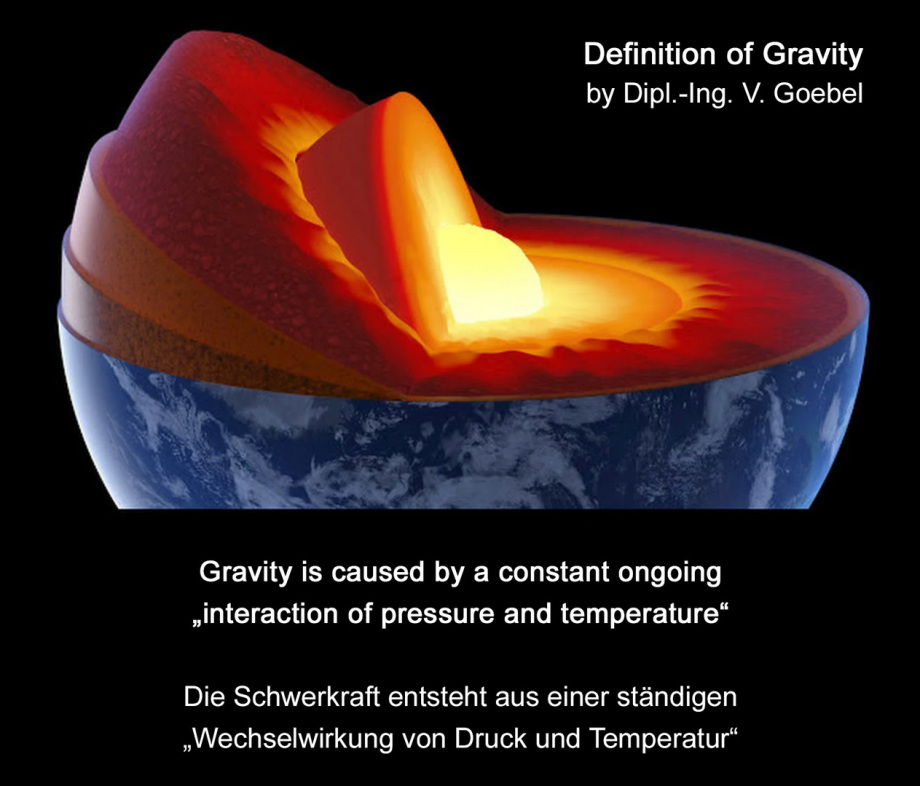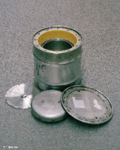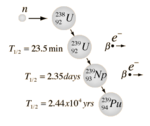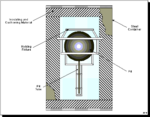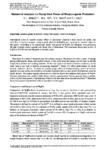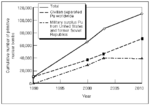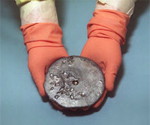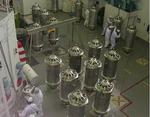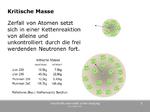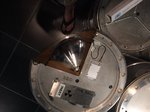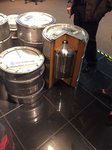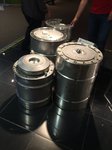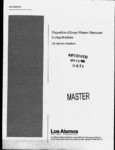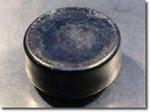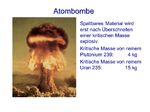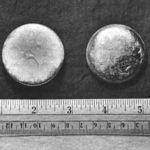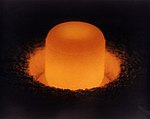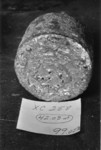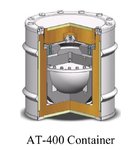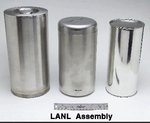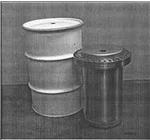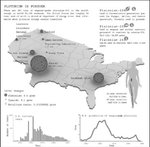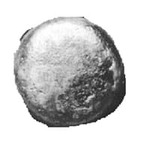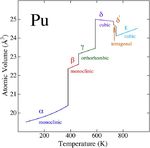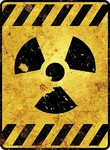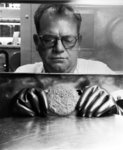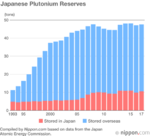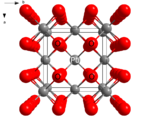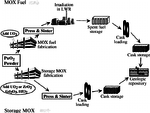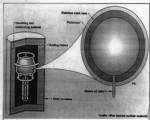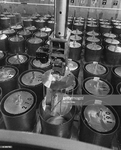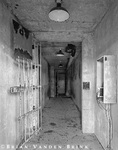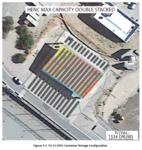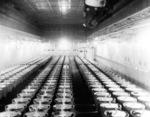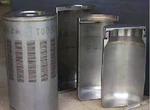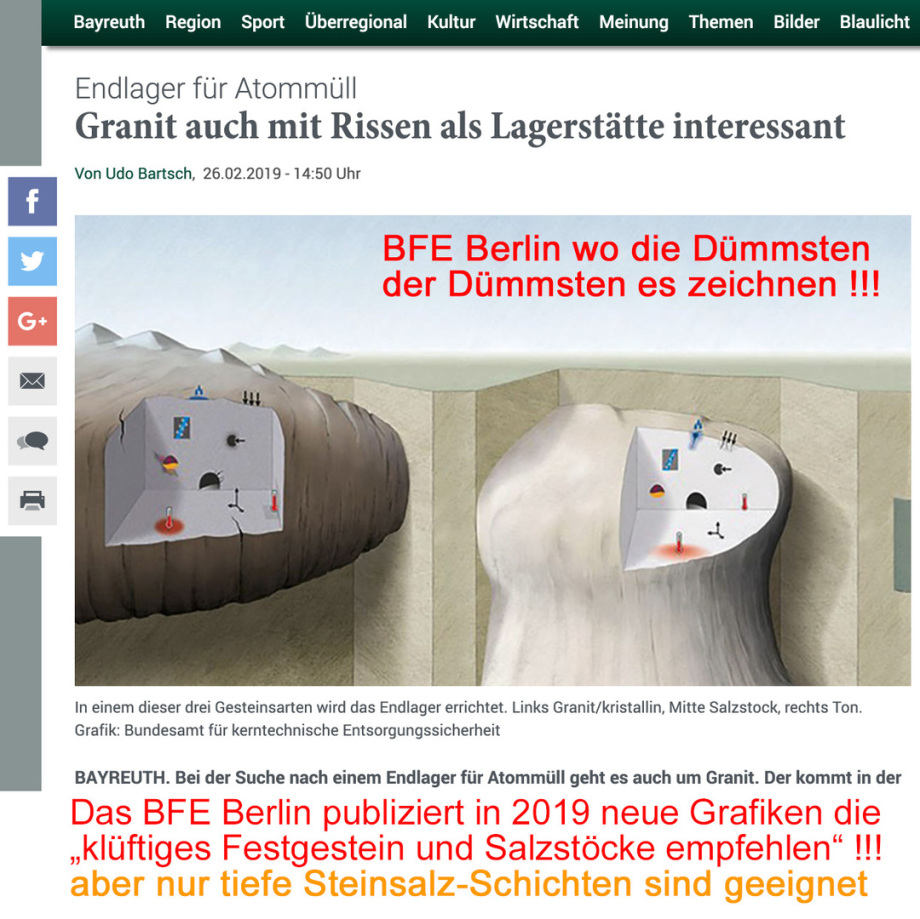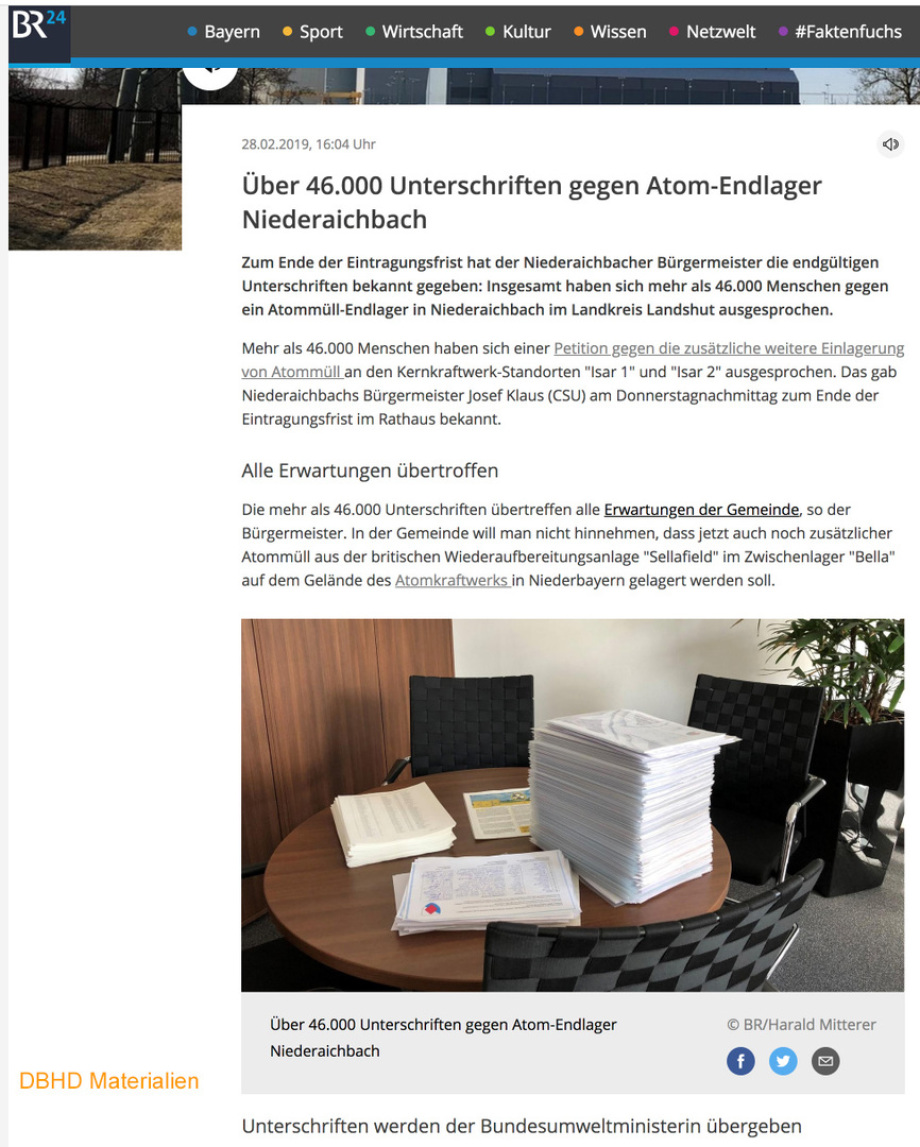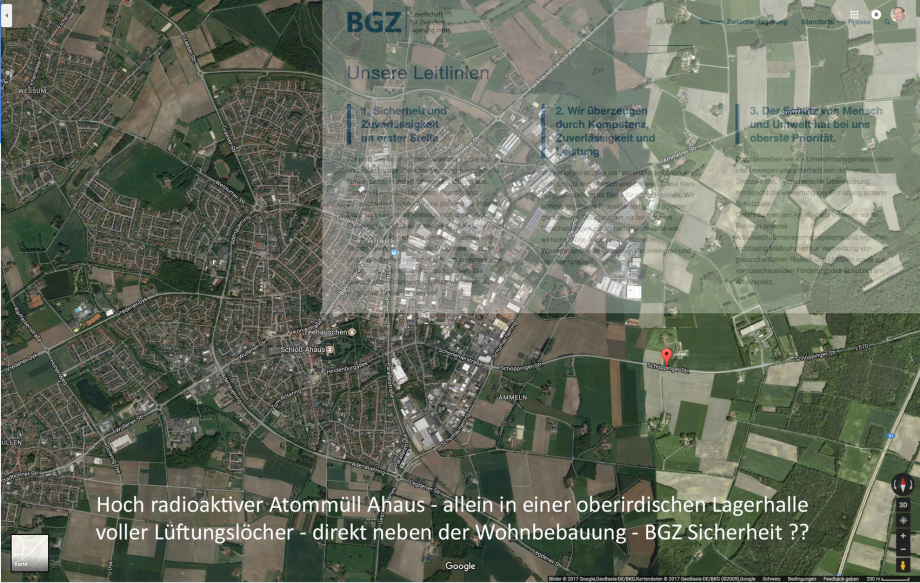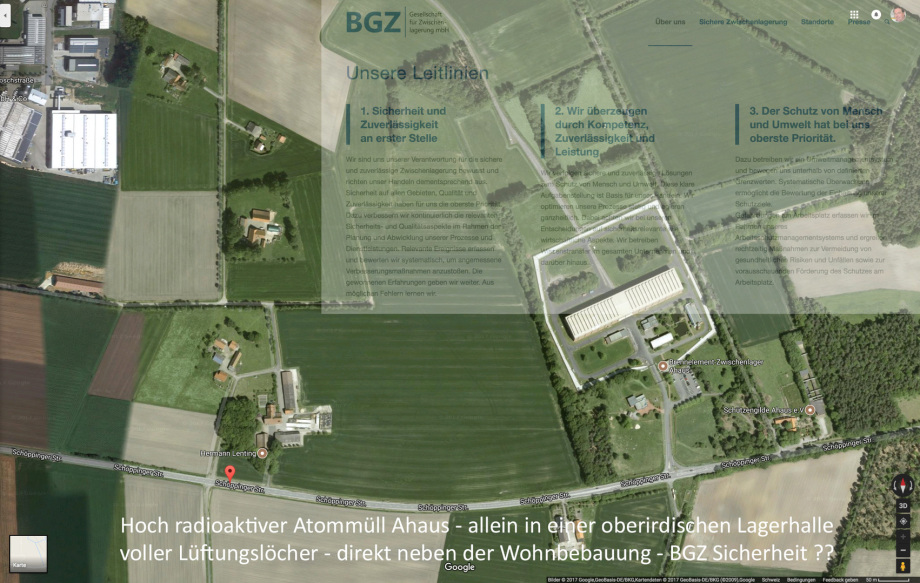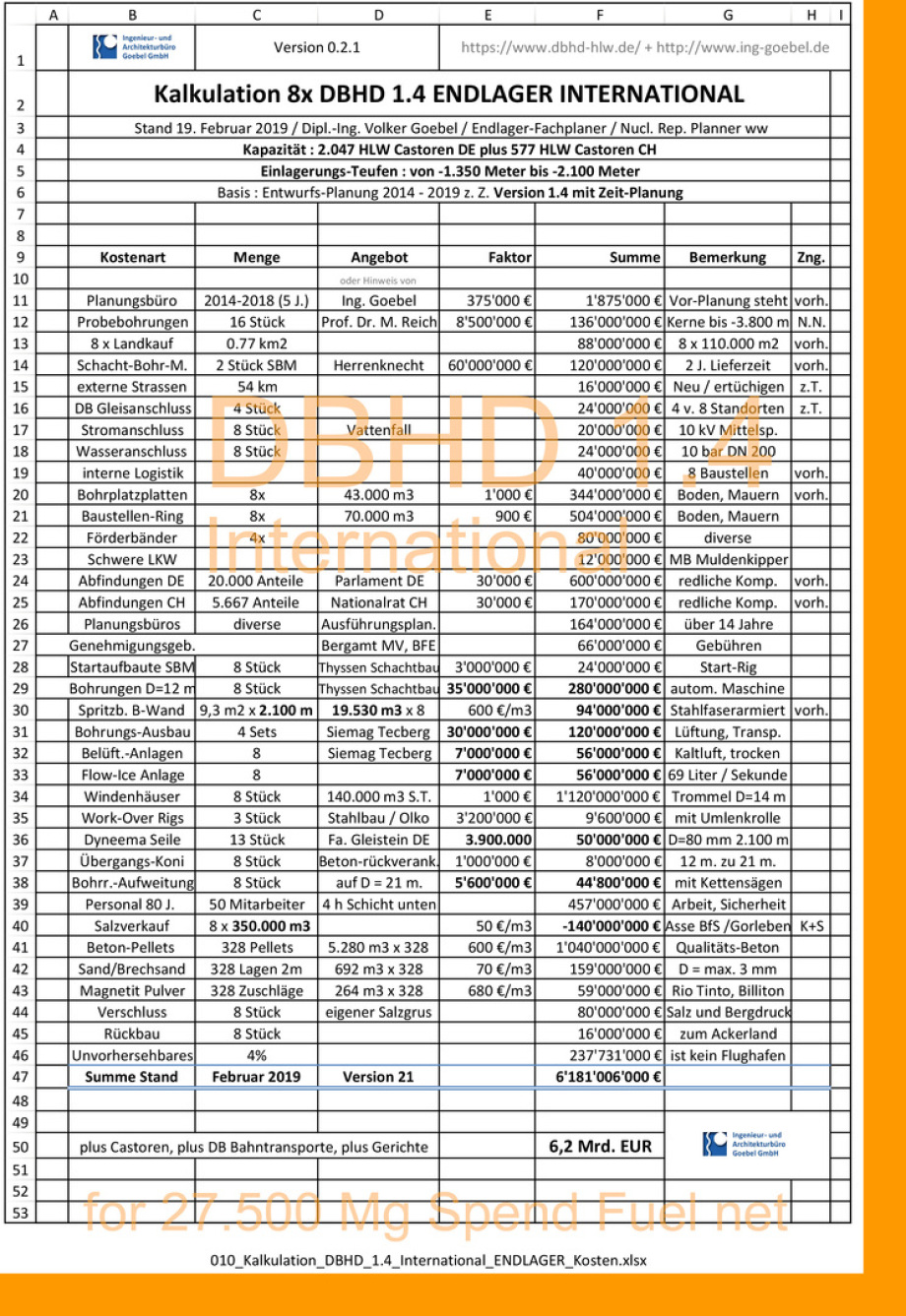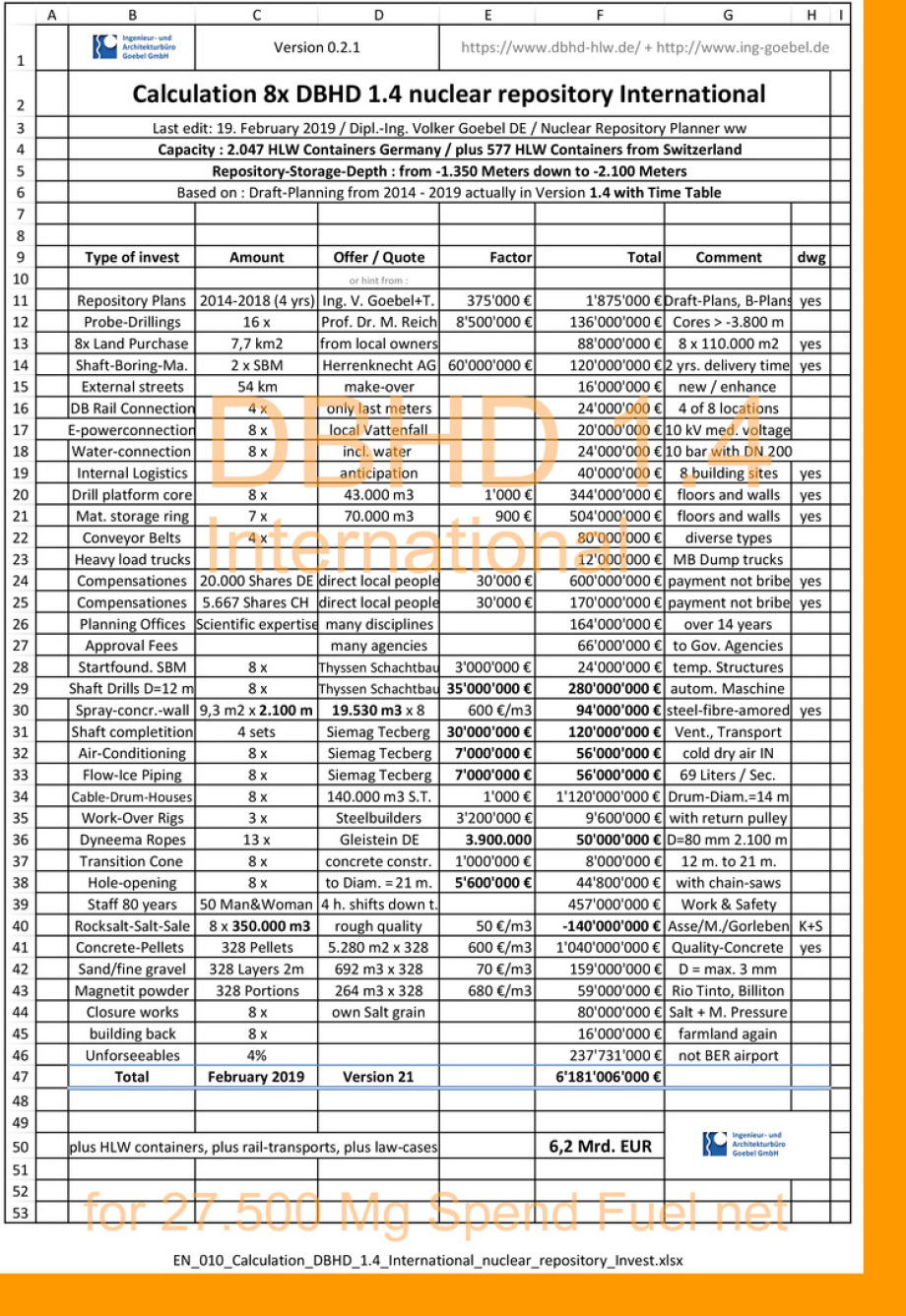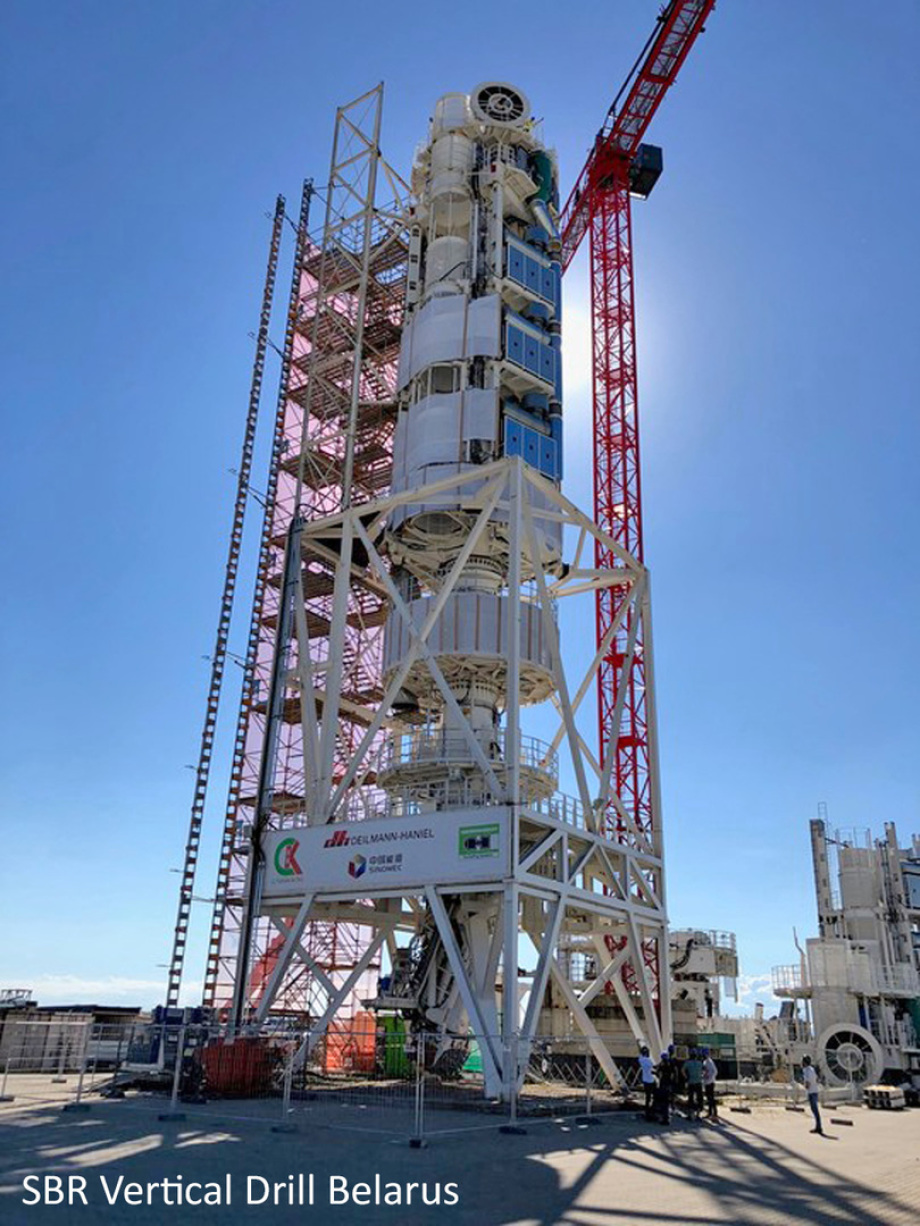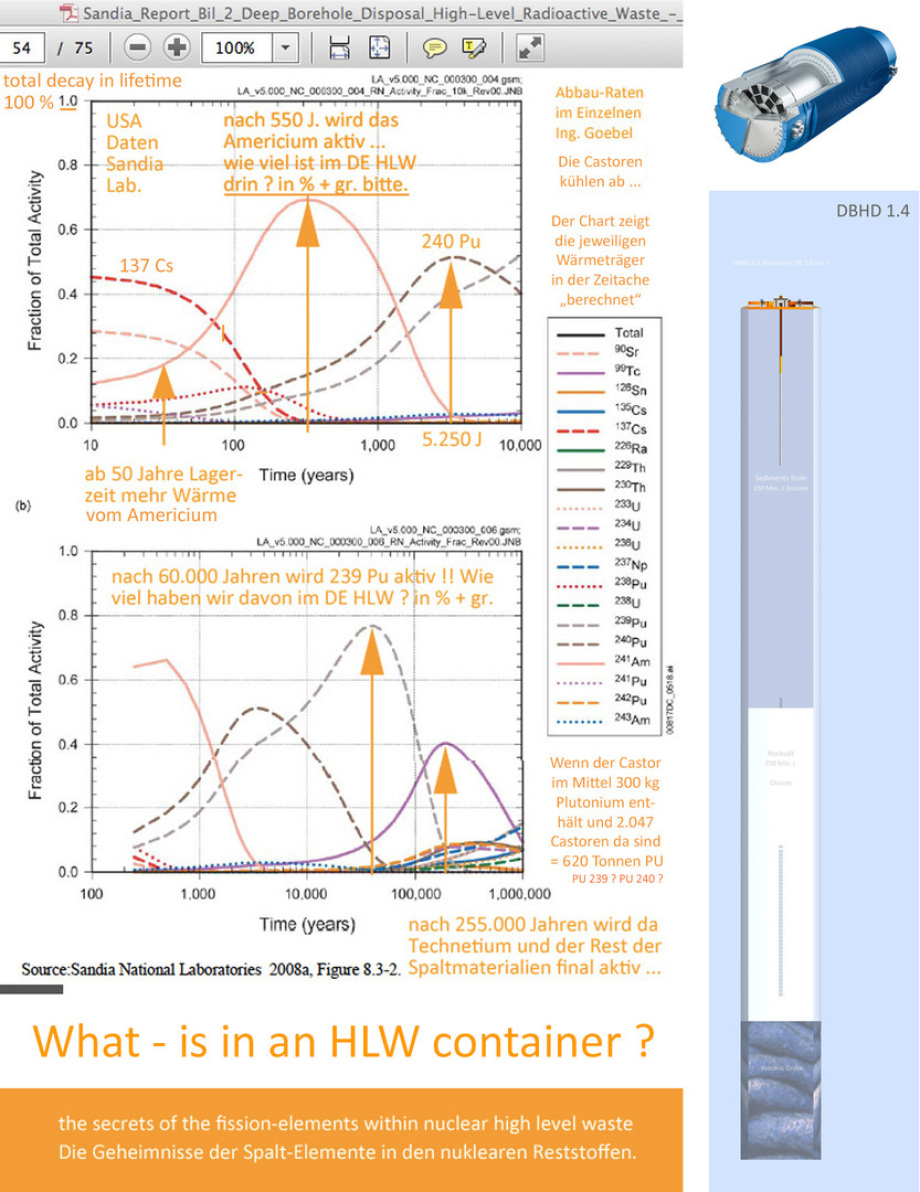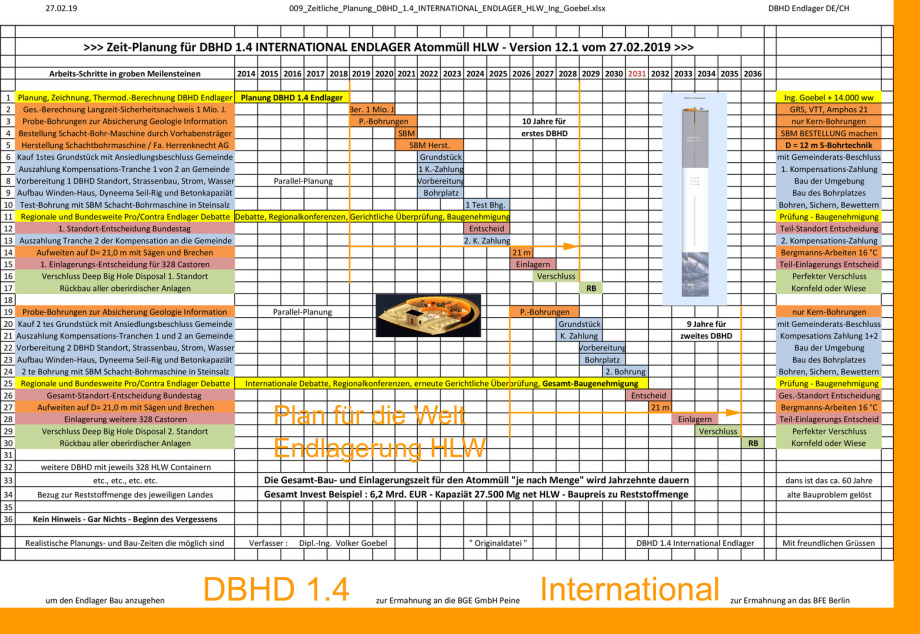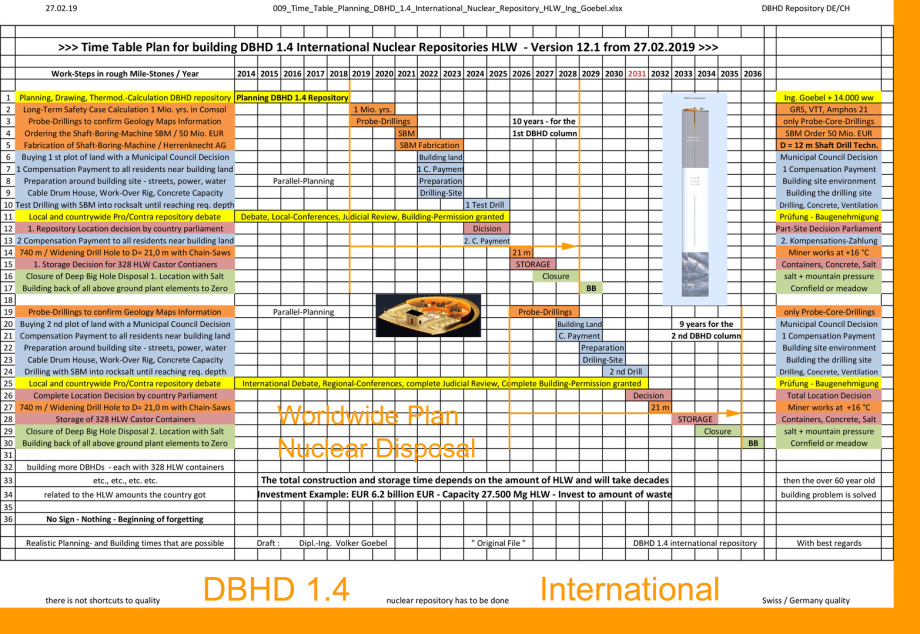DBHD 1.4 - the INTERNATIONAL Version
Buy a "country license" for DBHD ...
Most countries do not have a Super World Geology like Germany near Glasin - M-V - Germany
there it has 2.000 Meter Sediments and 1.600 Meter rocksalt layer underneath >>> DBHD 1.4
(Germany is densly populated - they want it that deep, with all the pain and heat it brings ...)
"DBHD 1.4 International" = 900 Meter Sediments + 1.300 Meter rocksalt cussion underneath
SOON you see the technical plans for DBHD 1.4 nuclear repository - the International Version
Capacity is = 41 Pellets x 8 HLW Containers = 328 HLW Containers (3.444 Mg heavy metal net)
required drilling depth is : 2.072 Meters - SBM Drill - Shaft Boring Machine Diameter 12 Meters
Actually we work on "DBHD 1.4 Canada" for rocksalt locations in New Brunswick / Nova Scotia
EN_024_DBHD_1.4.1_Canada_DSC_disposal_nu[...]
PDF-Dokument [11.1 MB]
JPG-Datei [587.9 KB]
JPG-Datei [911.0 KB]
JPG-Datei [14.3 MB]
024_DBHD_1.4_International_900m _ 1300m_[...]
PDF-Dokument [14.5 MB]
Warum das DBHD 1.4 International ein sicheres Endlager ist,
das 1-10 Mio Jahre dicht hält :
- die Sicherheit entsteht aus der Einlagerung in eine 250 Mio. Jahre alte Geologie !
Wir gehen davon aus, das eine Geologie die seit 250 Mio. Jahren trocken und
warm dort liegt - auch noch weitere 10 Mio. Jahre trocken und warm dort liegt
- das DBHD lagert so tief ein, dass auch Eiszeiten es nicht durch Bewegung und
Eiszeitliche-Rinnenbildung jemals erreichen können. (Rinnentiefen prüfen)
- Es wird in einer ungestörten Steinsalz-SCHICHT eingelagert - nicht in einem Salzstock !
Denn Aufwölbungs-Annomalien reissen seitlich andere Geologien mit, und wenn man
dann nahe an der Oberfläche entsorgt, wie in der Asse, kann Meteorwasser eindringen
Nur eine ungestörte, tiefe, besonders und mächtige Steinsalz-Schicht kann Endlager.
- im Steinsalz kommt auch härteste Gamma Strahlung nur 30 cm weit !!!
- das Steinsalz lässt flüchtigste Gase wie das IOD 129 nicht entweichen !!!
- das Steinsalz isoliert auch die hoch toxischen Eigenschaften von Atommüll !!!
- die Sicherheit entsteht aus der extremen Einlagerungs-Tiefe -1.350 bis -2.100 m.
- die Sicherheit entsteht aus dem perfekten Verschluss - es wird Salzgrus aus dem
Bohrungs-Aushub in die Bohrung gefüllt und der XXL Bergdruck presst es wieder
zu Steinsalz - ein perfekter Verschluss den nur ein Bergdruck kann ! (Tiefe notw.)
- der GNS Castor ist der weltweit bewährteste Behälter für nukleare Reststoffe
aber DBHD lagert auch preiswerte DSC und HI-Star 100 Behälter ein denn :
- die allseitige 5 Meter Beton-Umgiessung sind eine zus. wasserdichte Barriere
die glücklicherweise auch den Bergdruck auf weniger gute Behälter wegnimmt
- es werden verschiebliche Einzel-Pellets gegossen - eine Säule könnte brechen
- 2 Meter Sand Schicht zwischen den Pellets wg. der temp. Wärme-Ausdehnung.
Wir werden die geplante Tiefe erreichen - auch wenn die Wände dort +63 °C heiss
sind wenn wir dort ankommen - der geothermische Wärmestrom " im Berg " ist mit
nur 5,4 W/mK so absolut minimal, dass die Wand und der Boden relativ kühl bleiben
wenn die Bewetterung und die Flow-Ice Kübel die Umgebung erst mal abgekühlt haben
Die neu zuwandernde Wärmemenge ist gering - DBHD wird - 2.100 Meter erreichen.
Risiken : Um den 130 Tonnen Castor nach unten zu bringen muss man Ihn an einem
Stahl oder Dyneema Seil Durchmesser 60 mm transportieren ! - Sollte ein Castor ab-
stürzen und auf 7 weitere wartende Castoren treffen geht ein Castor auf - Dann muss
man die Bohrung aufgeben und wie geplant verschliessen. Oder drüber betonieren ?
Jeder Castor Transport ist ein Risiko Transport, weil schon eine Panzerfaust diesen
teuersten Behälter aller Zeiten öffnen kann. - Wir können froh sein den Castor zu
haben - wenn Sie wüssten was andere Länder so als HLW Container bezeichnen ...
Das Transport-Risiko mit DSCs und HI-Star 100 Containers ist gerade noch tragbar.
Wir brauchen gepanzerte Waggons für die vielen Transporte. Sicherheit geht vor.
Der Sicherheits-Zugewinn aus der Endlagerung ist diese Risiken wert. Niemand kann
die Zwischenlager effektiv bewachen - schon gar nicht über sehr lange Zeiträume ...
DBHD 1.4 hat einen zweiten thermodynamischen Nachweis bestanden. (Dr. G. Herres)
Was jetzt kommen muss ist der numerische Langzeitnachweis im Comsol Multiphysics.
Alterung von Grauguss durch Korrosion, Wärmetransport in der Steinsalz-Schicht, und
Erdbeben, und IOD 129 Einschluss und und - da kann die GRS Deutschland, oder die
Amphos 21 Spanien, oder die VTT Finnland dran arbeiten. (Angebote liegen z.T. vor)
Das ist eine XL Berechnung in Comsol Multiphysics - Multichemics - Sehr aufwändig ...
Geomechanik, Geochemie, Korrosion, Thermodynamik - diese 4 Themen sind wichtig.
Und die Geometrie des DBHD 1.4 muss dafür genau in 3D übernommen werden bitte.
Ein sicheres Endlager ist möglich und viele Länder haben die Steinsalz Geologie dafür.
MfG - Volker Goebel - Dipl.-Ing.- Endlager-Fachplaner ww
There is inquiries from all over the world for DBHD 1.4 International nuclear repository already !!!
ALL 14.550 experts of the world have received the DBHD .pdf plan. Most of them said Thank you
and much nicer words - and there was no critic from all these 14.550 experts all over the world !
DBHD is going to be an industry standard for the next 300 years and there will be given many new
building permits to the companies that take the responsability on to solve the end of the nuclear
production line - the geological repository for spend fuel - build DBHD's and win the future ...
JPG-Datei [914.6 KB]
JPG-Datei [14.4 MB]
Why DBHD 1.4 International is a safe repository that lasts tight 1-10 million years :
- safety arises from storage in a 250 million year old rocksalt geology !
We assume that a geology sited there dry and warm for 250 million years
will stay another 1-10 million years more dry and warm there
- the DBHD stores so deep, that even deep ice age scarfs do not reach the
deep nuclear repository (check the existing scarf depth in your country)
- DBHD always stores in an undisturbed rock salt LAYER - not in a salt dome !
Because bulge-up dome anomalies laterally entrap other geologies, and if you
then disposed to close to the surface, as in the ASSE, meteoric water can penetrate
Only an un-disturbed, deep, special and powerful rock salt layer can repository.
- in rock salt even the hardest gamma radiation only reaches 30 cm !!!
- The rock salt does not allow volatile gases such as the IOD 129 escape !!!
- The rock salt also isolate the highly toxic properties of nuclear waste !!!
- The safety arises from the good quality storage depth -1.350 to -2.100 m.
- The safety arises from the perfect closure - it is salt grain from the hole
drilling filled back in the hole and the XXL mountain presses it again to
rock salt - a perfect closure that can only be done mountain pressure! (Depth required)
- The GNS Castor Container is the world's most proven nuclear waste container
- But we also work with your HLW container like DSCs, HI-Star and other because :
- the all-round 5 meter concrete encapsulation is an additional watertight barrier
that also keeps the mountain pressure away from your not so solit container type
- slidable single concrete pellets are poured - a column could break in a earthquake
- 2 meters of sand layer between the pellets because of the thermal expansion.
We will reach the planned drilling depth - even if the walls there are +63°C hot
when we arrive there - the slow geothermal heat flow "in the mountain" is with
only 5.4 W / mK rather minimal, so that the wall and the floor remain relatively
cool when the ventilation and the Flow-Ice bucket have cooled the environment
The new amount of heat is low - DBHD will reach - 2.100 meters storage depth.
Risks: To bring down the 130 tons Castor Container you have to put it on one
Transport steel or Dynema rope diameter 60 mm ! - Should a Castor crash down
onto 7 more waiting HLW containers i will certainly open one - then we must
give up the hole and close as planned. Or we just poor some concrete over it ?
Every Castor transport is a risk transport because even a bazooka / Panzerfaust
can open the most expensive containers ever. - We can be glad to have the castor
or other good containers - protect the containers with a weapon proof hull during
street transport. It needs armored wagons for the many transports. Safety first.
The safety gain from the geological DBHD disposal is worth these risks. Nobody can
effectively guard the interim storage facilities - especially not for very long periods ...
DBHD 1.4 has passed a second thermodynamic detection. (Dr. G. Herres / Germany)
What has to come now is the numerical long-term proof in Comsol Multiphysics.
Aging of gray cast iron by corrosion, heat transport in the rock salt layer, and
Earthquakes, and IOD 129 inclusion and and - that is a task for GRS Germany, or
Amphos 21 Spain, or VTT Finland to work on it. (Offers are currently available)
This is an XL calculation in Comsol Multiphysics - Multichemics - Very time-consuming ...
The geometry of the DBHD 1.4 International must be taken over exactly in 3D please.
A safe repository is possible and many countries have the deep rocksalt geology for it.
MfG - Volker Goebel - Dipl.-Ing. - final storage specialist planner ww
one of our US clients has to proof a repository plan to get a building permit for a new NPP
Was wir brauchen ist der "1 Mio. Jahre Langzeit-Nachweis - BERECHNUNG" und Simulation
von : Thermo-Dynamik, Geo-Mechanik, Geo-Chemie und Korrosion - in Comsol or Ansys
What it needs NOW is the 1 Mio. yrs proof CALCULATIONES - with parallel AGING-SIMULATION
Themes : Thermo-Dynamics - Geo-Mechanics - Geo-Chemics and Corrosion - Comsol or Ansys
Some HLW containers like the Castor are easy to transport to the nuclear repository location
other HLW containers made from concrete are a certain risk to transport to disposal location
There is inquiries from all over the world for DBHD 1.4 International nuclear repository already !!!
ALL 14.550 experts of the world have received the DBHD .pdf plan. Most of them said Thank you
and much nicer words - and there was no critic from all these 14.550 experts all over the world !
DBHD is going to be an industry standard for the next 300 years and there will be given many new
building permits to the companies that take the responsability on to solve the end of the nuclear
production line - the geological repository for spend fuel - build DBHD's and win the future ...
In den USA hat Fa. Holtec massenweise diese billigen Beton Container für spend fuel verkauft !
Das Problem ist die Transportierbarkeit - In der Beton Hülle steckt noch ein Stahl-Behälter der
aber fast nicht gegen Gamma Strahlung abgeschirmt ist - Wandstärke vielleicht ca. 4 cm und
nicht 45 cm wie der Castor. Es wird sehr schwierig werden die Holtec Behälter zum Endlager
zu transportieren und dort in das DBHD abzuseilen. Es existiert keine technische Zeichnung die
man ernst nehmen kann und es gibt nicht einmal technische Fotos und auch keinen Plan für den
Transport. - Wer von Holtec kauft hat das spent fuel auf dem Parkplatz stehen - Auf Dauer ... !
ML17289A237.pdf
PDF-Dokument [9.2 MB]
the US stores spent fuel in cheap Holtec concrete containers outside on the former staff parking - omg America
Mr. Aladar Csontos from the EPRI Institute in Washington DC will develop a plan how to bring these containers
down into the US DBHD repositories - he is going to develop a plan with real technical drawings and other ....
Mr. Mathew McKnight from Holtec Company has send a better information brochure.
But i still ask for "a real technical drawing with metric mesurement" and "a new 3D
drawing" referring to todays standards of technical information. It is about time now
to get ready for transport to repository because containers have a limited life span !
Stop looking onto Yucca only - that is a 40 year old idea of Generation 0.1 - with the
big diameter drilling technologies SBM / SBR from Herrenknecht AG the US got much
esafer, better, decentral and cheaper options to store their 80.000 tons spent fuel.
Step into DBHD 1.4 International nuclear repository - Send geological data and soon
you get a repository plan back : based on specific US geologies - based on existing
Holtec high level waste containers - based on todays Deep Big Hole Disposal drilling.
Here is what Mr. Mathew McKnight wrote - the 3 original text messages :
You clearly do not know Holtec’s product offering very well. Apparently, you are not
aware of Holtec’s transport cask system. Holtec does have a transport cask design. https://holtecinternational.com/productsandservices/wasteandfuelmanagement/dry-cask-and-storage-transport/
You’re welcome. NRC has public documents, SARs and COCs, for the HI-STAR 100. Here’s one of them. https://www.nrc.gov/docs/ML1028/ML102871079.pdf
Unfortunately, drawings are proprietary. I was hoping one of our public SAR documents had the drawings with width, height, and weight of system. But that must not be the case. You may want to reach out to our sales department to discuss partnership or agreement for sharing of information.
PDF-Dokument [32.0 MB]
And then Mr. Michael Ford came into the discussion : Ford ES&H Solutions LLC / Amarillo, Texas
Prof. Ing. Volker Goebel, because detailed technical designs drawings are generally considered to be closely guarded intellectual property of the companies who compete in this very small market sector (HOLTEC, NAC International, and AREVA), I would strongly recommend looking up the licensing activities of the current or planned ISFIS’s in the US on the NRC’s ADAMS data base. The safety basis and licensing records you will find there are voluminous and are freely available to the public. While you may not get detailed technical drawings in the public versions of the reports, you will find sufficiently detailed drawings accompanied by the technical bases of the designs to mitigate probable accident scenarios. https://www.nrc.gov/reading-rm/adams.html#web-based-adams. If you are not able to find what you need there, please let me know.
Dear Mr. Ford - thank you for that good trace we will follow up on NOW - feel free to offer DBHD 1.4 International to your US clients - we offer you 60 % of each planning Dollar and full support - send geology and container data - and soon you get a detailed public repository plan back to put on the clients table - also nuclear repository is a business - a big business ... have a look into an example calculation ...
But 1.000 result for HI-Star 100 Holtec container system - that is too much - that does not help at all - GRRR
Please get me your contact information and i will personally make sure
you get up to date information. M.williams@holtec.moc
Dear Mr. Williams (Director at Holtec / USA)
thanks for your offer in LinkedIN to send HI-Star 100 measurement data !
We are also interested in the "transport system" because of transport to a
more the 300 km distanced nuclear repository site "DBHD 1.4 International"
As nuclear repository planners for many countries already, currently doing
DBHD 1.4 Canada plans with DSC container data from NMMO Canada, we are
looking forward to answer existing inquiries from a US company that got
HI-Star 100 containers on site. Please send container measurement data.
We are also interested in some general "decay heat" data per HI container.
With all respect to Holtecs business in waste container systems,
we wish you a good and successful day in the nuclear business.
Best regards from
Volker Goebel / Dipl.-Ing.
Nuclear Repository Planner ww
one of our US clients has to proof a repository plan to get a building permit for a new NPP
There is inquiries from all over the world for DBHD 1.4 International nuclear repository already !!!
ALL 14.550 experts of the world have received the DBHD .pdf plan. Most of them said Thank you
and much nicer words - and there was no critic from all these 14.550 experts all over the world !
DBHD is going to be an industry standard for the next 300 years and there will be given many new
building permits to the companies that take the responsability on to solve the end of the nuclear
production line - the geological repository for spend fuel - build DBHD's and win the future ...
1. Canada accepted DBHD as key note contribution
No. 1 to NWMDER Conference - Thank you ...
2. Canada (NWMO) has send container measurement data and decay heat data in March 2019
3. we are actually working on DBHD 1.4 Canada with given realistic the waste heat data now !
4. then we received the desired amount of DSCs we have to plan for : 7.821 DSC's in total !!!
Dear Mr. Volker Goebel:
On behalf of the NWMDER 2019 Program Committee, I am pleased
to inform you that the following submission has been accepted
to appear at the conference:
DBHD - Deep Big Hole Disposal in rocksalt layer New
Brunswick
Looking forward to receiving your full paper.
Best Regards,
Dr. Paul Gierszewski / NWMO Canada
NWMDER 2019 Conference / Track Chair, 6.
Used Nuclear Fuel & High Level Waste Management
NWMO Canada is in heavy trouble - the safety case calculations showed that the horizontal repository system Generation 0.1 FAILED COMPLETELY !!!
and that is why NWMO accepted DBHD and send container measurement and decay heat data - Ing. Goebel helps and plans DBHD 1.4 Canada NOW
and then - suddenly good news from Canada - that goes toward a successful cooperation !
Dear Mr. Volker Goebel:
On behalf of the NWMDER 2019 Program Committee, I am pleased
to inform you that the following submission has been accepted
to appear at the conference:
DBHD - Deep Big Hole Disposal in rocksalt layer New
Brunswick
To upload your revised abstract and full paper, please visit the following site:
https://www.softconf.com/h/nwmder2019/
The full paper formatting instructions are available on the conference website, under Author Information:
https://www.cns-snc.ca/events/nwmder2019/
Looking forward to receiving your full paper.
Best Regards,
Paul Gierszewski
NWMDER 2019
Track Chair, 6. Used Nuclear Fuel & High Level Waste Management
Dear Mr. Paul Gierzewski,
Dear Prof. Dr. Akira Tokuhiro, Dear Dr. G. Herres, Dear Prof. Dr. Philipp,
Dear NWMO repository team Canada,
Thank you very much for accepting the DBHD proposal submission
That looks very much like a start for a cooperation NWMO & DBHD
First i inform Prof. Dr. Akira Tokuhiro - then i complete the paper ...
We are thinking about safe ship transport to New Brunswick sites.
Will you please send information about the Canadian spend fuel
container including height, width, length and weight - for sure we
also need details on how to attach it to a cable to make you the
plan for DBHD 1.4 Canada. - send data to : info@ing-goebel.de
Please save some money to be able to "invite" me for a week ...
Am sure that Prof. Dr. Akira Tokuhiru and i will be able to bring
the required solutions into NWMO for that you succeed with the
most wicked storage problem we ever had to find a solution for.
Wish you a very good and successful day in beautiful Canada.
Best regards to you and best greetings to NWMO team from
Volker Goebel / Dipl.-Ing.
Nuclear Repository Planner ww
https://www.cns-snc.ca/events/nwmder2019/
And now - 04.03.2018 we received the measurement information for Canada :
we do it now - we plan DBHD 1.4 Canada with DSC's for New Brunswick area !
for DBHD there is no complicated re-packing required - DBHD will store DSC's !
the only question is to get these DSC containers slowly out of the towns by truck
and ship them by boat to DBHD 1.4 nuclear repository in New Brunswick - each
time only 8 per month - verify that transport option please ! develop overpack
with bumpers - with the maximum size the Canadian street transport allows us ...
Buy a DBHD country license please - and hire the main developer into your team
Put some money on Volker Goebel account : IBAN CH16 0070 0110 0038 6441 5
Only a geology can do repository - Humans only do temporary entrance buildings
Best regards from Ing. Goebel / Nuclear Repository Planner ww
WooW - Looks like you have a first idea for your bumpers - you call it a top impact
liner - but for safe transport we will also need a tank metal hull - there might be one
guy with a bazooka (Panzerfaust-Waffe) during street transport out of the towns ...
Canada got a lot of spent fuel to bring down ... that is a lot of HLW containers !
as far as we know it is 78.120 tons - that is the amount we take seriously for the
DBHD 1.4 Canada plan - 10 tons net per container would mean app. 7.812 DSCs
Well - the means to build 24 DBHDs with 7.872 DSC's - that is an 80 years task !!
1. Canada accepted DBHD as key note contribution
No. 1 to NWMDER Conference - Thank you ...
2. Canada (NWMO) has send container measurement data and decay heat data in March 2019
3. we are actually working on DBHD 1.4 Canada with given realistic the waste heat data now !
4. then we received the desired amount of DSCs we have to plan for : 7.821 DSC's in total !!!
>>> looking only onto the height dimension we can say that there should be more DSCs in one DBHD possible - but both containers claim to load 10 tons net heavy metal - so what is the thermal decay heat power - that might be a limit ...
that will be soon an interesting work to make a DBHD 1.4 Canada plan
First we received missing container measurement data from NWMO (Paul)
2nd we received decay heat data for spend Candu fuel from NWMO (Dimitrie)
Dear Dimitrie - that is much better - for good reasons i re-write how i understand it :
1x white DSC with 3,55 x 2,12 x 2,41 Meters = 1,175 KW
>>> The "storage pellets" for DBHD 1.4 Canada in New Brunswick and Nova Scotia - we develop a nuclear high level waste repository for Canada - geological disposal in deep rocksalt
JPG-Datei [130.1 KB]
JPG-Datei [1.0 MB]
JPG-Datei [3.0 MB]
JPG-Datei [592.6 KB]
JPG-Datei [1.0 MB]
JPG-Datei [1.6 MB]
JPG-Datei [947.1 KB]
JPG-Datei [1.7 MB]
PDF-Dokument [90.0 KB]
EN_024_DBHD_1.4.1_Canada_DSC_disposal_nu[...]
PDF-Dokument [11.1 MB]
PDF-Dokument [11.8 MB]
Also Mr. Frans Verspeek shows a certain and qualified interest on DBHD 1.4 International
Thanks in Advance
Best Regards
Frans Verspeek
Sr.-Inspecteur – Auditor
Federaal Agentschap voor Nucleaire Controle (FANC)
Departement beveiliging en vervoer
Dienst invoer en vervoer
GSM nr : 0492 58.39.54
' : + 32 2 289.20.63
8 : frans.verspeek@fanc.fgov.eb
There is inquiries from all over the world for DBHD 1.4 International nuclear repository already !!!
ALL 14.000 experts of the world have received the DBHD .pdf plan. Most of them said Thank you
and much nicer words - and there was no critic from all these 14.000 experts all over the world !
DBHD is going to be an industry standard for the next 300 years and there will be given many new
building permits to the companies that take the responsability on to solve the end of the nuclear
production line - the geological repository for spend fuel - build DBHD's and win the future ...
Ms. Dana Havlin Novakova Geologist, Analyst at State Office for Nuclear Safety
had some good questions concerning DBHD - asking for Prague, Czech Republic
PDF-Dokument [4.2 MB]
>>> hello Holtec - this is to show you how simple and informative a
brochure for a nuclear waste container looks like in Germany - with
much relevant measurement for the repository planner in - example
And this is what the German people call a good HLW metal container
for spent fuel HLW and (Glas Kokillen aus der Wiederaufarbeitung)
Castor - made in Germany - 2,2 Mio. EUR each - perfect for DBHD 1.4
Product_Info_CASTOR HAW28M.pdf
PDF-Dokument [344.8 KB]
Produktinfo CASTOR HAW28M_nuclear_waste_[...]
PDF-Dokument [347.0 KB]
productinfo CASTOR V_52_for DWR_spend_fu[...]
PDF-Dokument [343.4 KB]
Produktinfo CASTOR V_52_for_SWR_spend_fu[...]
PDF-Dokument [339.5 KB]
Productinfo CASTOR V_19_nuclear_waste_co[...]
PDF-Dokument [433.5 KB]
Produktinfo CASTOR V-19.pdf
PDF-Dokument [436.7 KB]
Sehr geehrte Frau Dr. Merkel,
bitte geben Sie Ing. Goebel einen neuen Termin. - Wir sind soweit ...
Gravity is caused by a constant ongoing
„interaction of pressure + temperature“
Definition of Gravity Dipl.-Ing. V. Goebel
Die Schwerkraft entsteht aus einer ständigen
„Wechselwirkung von Druck und Temperatur“
Definition der Schwerkraft von Ing. V. Goebel
Beginn der Vor-Recherche bezüglich Lagerung von Waffen-Plutonium in den USA
Start of the pre-research concerning the storage of weapon plutonium in the US
PDF-Dokument [4.8 MB]
PDF-Dokument [4.4 MB]
PDF-Dokument [1.3 MB]
there has been questions if DBHD can store weapon plutonium - but i can not answer this question yet !
In general the storage of plutonium is a question of kilogramms, only undercritical in amounts possible
It is also a question of storage containers and mountain pressure. - but i can not answer this question !
In general DBHD is good for nuclear waste that "contains app. 300 kg Plutonium per 10.500 kg net" but
in "equally distributed in the spend fuel rods" That stays undercritical in DBHD - BUT pure plutonium is
totally different - the critical mass is very little and the mountain pressure together with earthquake ?
DBHD is good for spend fuel - BUT for pure Plutonium storage you better choose a deeper DBD storage
DBHD = Deep Big Hole Disposal (-2.100 m) >>>> DBD = Deep Borhole Disposal (-5.000 Meters & deeper)
Ing. Goebel just started to look into that matter. It might take yrs to come up with a PU disposal plan
>>> und erneut blamiert sich das BFE Berlin wieder bis auf die Knochen !
Wer in 2019 - nach der Asse noch Endlagerung in den Köpfen von kaum überdecken Salz-Stöcken empfiehlt
der hat in einem Bundesamt für Kerntechnische Entsorgungssicherheit so gar nichts verloren ! SKANDAL !!!
Wer auch klüftiges Festgestein für eine oberflächennahe Endlagerung empfiehlt hat auch die Kündigung ver-
dient - das kommt davon wenn man nie massstäblich zeichnet - dann gerät jedes Bild zur einer Farce ...
JPG-Datei [1.4 MB]
PDF-Dokument [66.1 KB]
Please have a look at the LinkedIN pages from Ing. Goebel
that is where you find the 14.550 experts in the contacts.
https://www.linkedin.com/in/dipl-ing-volker-goebel-architect-nuclear-repository-planner-ww/
There is inquiries from all over the world for DBHD 1.4 International nuclear repository already !!!
ALL 14.550 experts of the world have received the DBHD .pdf plan. Most of them said Thank you
and much nicer words - and there was no critic from all these 14.550 experts all over the world !
DBHD is going to be an industry standard for the next 300 years and there will be given many new
building permits to the companies that take the responsability on to solve the end of the nuclear
production line - the geological repository for spend fuel - build DBHD's and win the future ...
JPG-Datei [1.5 MB]
PDF-Dokument [66.4 KB]
Was wir brauchen ist der "1 Mio. Jahre Langzeit-Nachweis - BERECHNUNG" und Simulation
von : Thermo-Dynamik, Geo-Mechanik, Geo-Chemie und Korrosion - in Comsol or Ansys
What it needs NOW is the 1 Mio. yrs proof CALCULATIONES - with parallel AGING-SIMULATION
Themes : Thermo-Dynamics - Geo-Mechanics - Geo-Chemics and Corrosion - Comsol or Ansys
There is inquiries from all over the world for DBHD 1.4 International nuclear repository already !!!
ALL 14.700 experts of the world have received the DBHD .pdf plan. Most of them said Thank you
and much nicer words - and there was no critic from all these 14.700 experts all over the world !
DBHD is going to be an industry standard for the next 300 years and there will be given many new
building permits to the companies that take the responsability on to solve the end of the nuclear
production line - the geological repository for spend fuel - build DBHD's and win the future ...
JPG-Datei [546.0 KB]
JPG-Datei [1.9 MB]
PDF-Dokument [39.7 KB]
There is inquiries from all over the world for DBHD 1.4 International nuclear repository already !!!
ALL 14.700 experts of the world have received the DBHD .pdf plan. Most of them said Thank you
and much nicer words - and there was no critic from all these 14.700 experts all over the world !
DBHD is going to be an industry standard for the next 300 years and there will be given many new
building permits to the companies that take the responsability on to solve the end of the nuclear
production line - the geological repository for spend fuel - build DBHD's and win the future ...
JPG-Datei [1.9 MB]
PDF-Dokument [39.2 KB]


